The Samsung QN95D immediately made a great impression on us. Right from the start, we felt that the Tizen system is intuitive and quick. The fast access to streaming applications such as PrimeVideo, Netflix, and MAX, as well as the ability to integrate with the SmartThings ecosystem, makes using the television simply convenient. The solar remote is a clever solution – eco-friendly and practical, as it allows control of other devices, such as a decoder (e.g. Canal+) or soundbar. While watching films and series, we quickly noticed how much of a difference the MiniLED technology makes. Thanks to the precisely functioning backlight zones, the picture gained incredible depth - which was confirmed by our contrast tests. The blacks are truly deep, and bright scenes using HDR stand out with excellent detail despite the lack of Dolby Vision. Additionally, the high brightness combined with the anti-reflective coating allows for comfortable viewing even in a sunlit room. When we played on this television, we immediately appreciated the low input lag and the fluidity of the image. The 144 Hz panel and support for HDMI 2.1 guaranteed dynamic and responsive gameplay, regardless of the game. All these features made every gaming session pure pleasure, especially in dynamic titles where precision and lack of delays matter. In terms of design - which is worth mentioning for this television - the QN95D simply looks great. The slim housing, solid central stand, and Ambient Mode function, which allows the screen to blend into the room's decor, give it an elegant touch. The included camera is an interesting addition that can be useful during video calls or when using interactive applications – like personal training through the Daily+ tab. However, for such, let’s be honest, an expensive piece of equipment, there are a few downsides. The lack of a recording function and support for sound in DTS:X format may be a problem for users seeking this feature. Nevertheless, the Samsung QN95D is a television that combines exceptional picture quality, functionality, and elegant design. The MiniLED backlighting makes a real difference here, especially if we care about deep blacks, high contrast, and excellent brightness. This is a device that will perform well during movie screenings, dynamic gaming, and everyday television watching.
- Matching (Score)
- Our verdict
- TV appearance
- Where to buy
- Contrast and black detail
- HDR effect quality
- Factory color reproduction
- Color reproduction after calibration
- Smoothness of tonal transitions
- Image scaling and smoothness of tonal transitions
- Blur and motion smoothness
- Console compatibility and gaming features
- Input lag
- Compatibility with PC
- Viewing angles
- TV efficiency during daytime
- Details about the matrix
- TV features
- Apps
- Playing files from USB
- Sound
Samsung Neo QLED QN95D vs Samsung QN90F / QN92F
Direct compare
Neo QLED / QN95

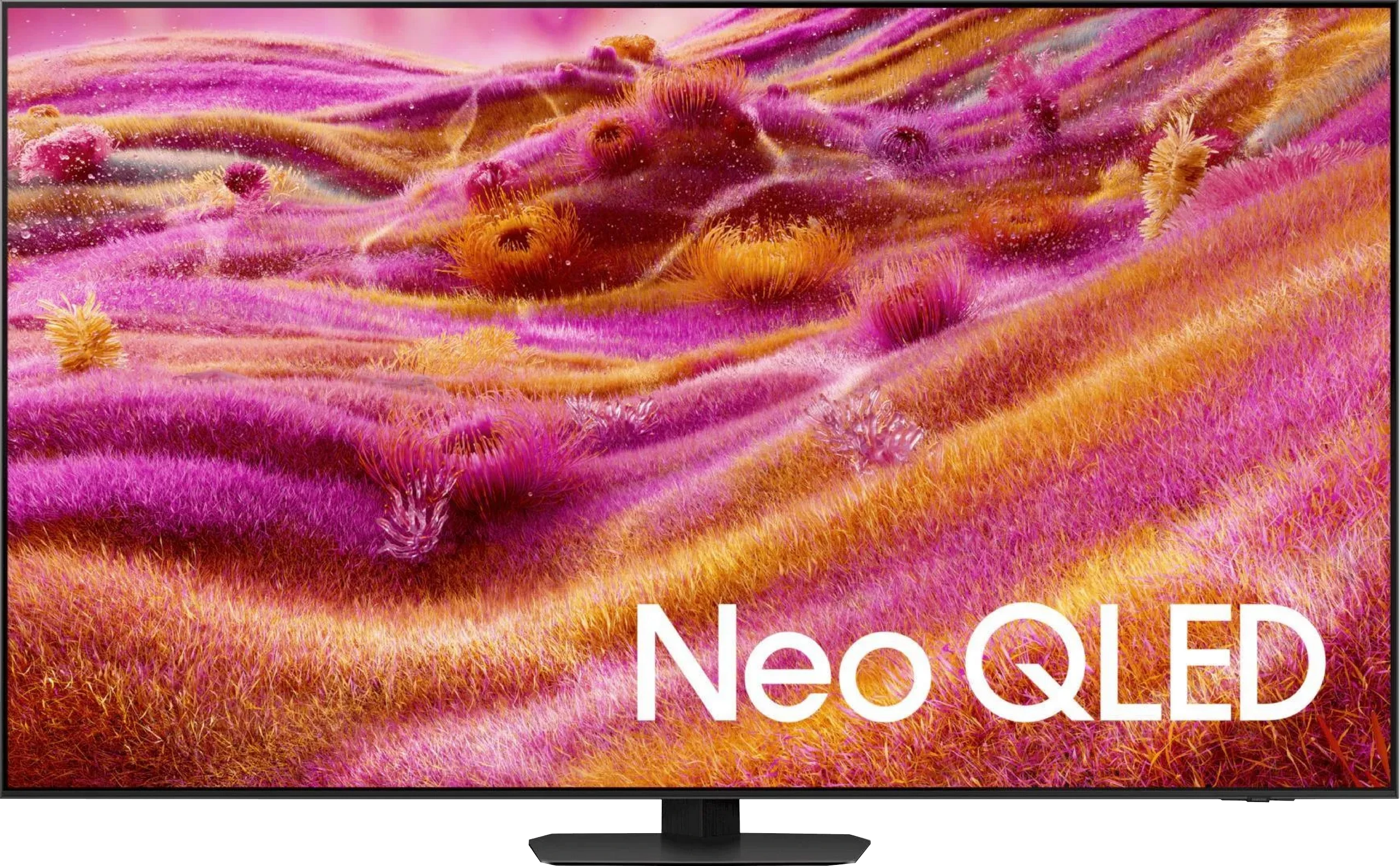
Panel type: LCD VA (wide viewing angle)
Resolution: 3840x2160
System: Tizen
Model year: 2024
Complete the survey to find out the result

Panel type: LCD VA
Resolution: 3840x2160
System: Tizen
Model year: 2025
Complete the survey to find out the result

Overall rating
7.8
7.9
Movies and series in UHD quality
8.0
7.8
Classic TV, YouTube
8.1
7.6
Sports broadcasts (TV and apps)
7.7
7.3
Gaming on console
9.2
8.8
TV as a computer monitor
8.6
8.8
Watching in bright light
6.5
7.2
Utility functions
6.7
7.7
Apps
9.1
8.7
Sound quality
7.0
7.8
Complete the survey to find out what fits your preferences
Advantages
Excellent brightness - great for HDR content
Very good contrast
Wonderful choice for gamers (HDMI 2.1 4K@144Hz, low input lag)
Wide viewing angles - unusual for this type of panel
Modern design
Camera included
Very good contrast and black levels
Amazing HDR brightness in films
Very good performance of the television during the day thanks to the matte panel and high brightness
High motion fluidity – up to 165 Hz in PC mode
Low input lag
A lot of features for gamers, including the proprietary gaming smoothness enhancer Game Motion Plus
High susceptibility to image calibration
Smooth Tizen operating system with smart home (IoT) features
Pleasant sound with noticeable bass despite the slim design
Modern design
Disadvantages
No recording support
No DTS format support - may pose a problem for Blu-ray users
Worse viewing angles compared to its predecessor QN90D.
No DTS sound for Blu-ray home theatres.
No HGiG* feature.
*We hope that this issue will be resolved quickly. We are monitoring the situation closely.
Our verdict
The Samsung QN90F is a television that demonstrates, in many respects, how mature the development of miniLED technology can be. It offers excellent contrast and blacks, very high HDR brightness, which works well for both films and games, along with a matte screen that makes a huge difference in everyday use. This is what makes the QN90F one of the best televisions for viewing in sunny living rooms – reflections and glare virtually disappear, and the image remains sharp and clear. Gamers, in turn, receive a package of all the essential features, very low input lag, and a unique Game Motion Plus mode, which continues to be a strong advantage of Samsung over the competition. In addition, there is a fast Tizen system, high-quality smart features, and quite pleasant audio that can be enhanced with a soundbar through Q-Symphony. However, there are compromises. Samsung chose to forgo a coating that expands viewing angles – and while the matte screen performs brilliantly during the day, a noticeable decrease in brightness and colour intensity is evident at steeper angles. It’s also unfortunate that with software updates, HGiG support has disappeared, which may be a significant drawback for demanding gamers. Despite these observations, the QN90F remains one of the best, if not the best, 4K miniLED televisions currently available. It’s a model that combines excellent picture parameters, high functionality, and modern design, while also being exceptionally practical for everyday use. If someone is looking for a television for a bright living room that can handle films, sports, and games – it's hard to find a better choice today.
TV appearance




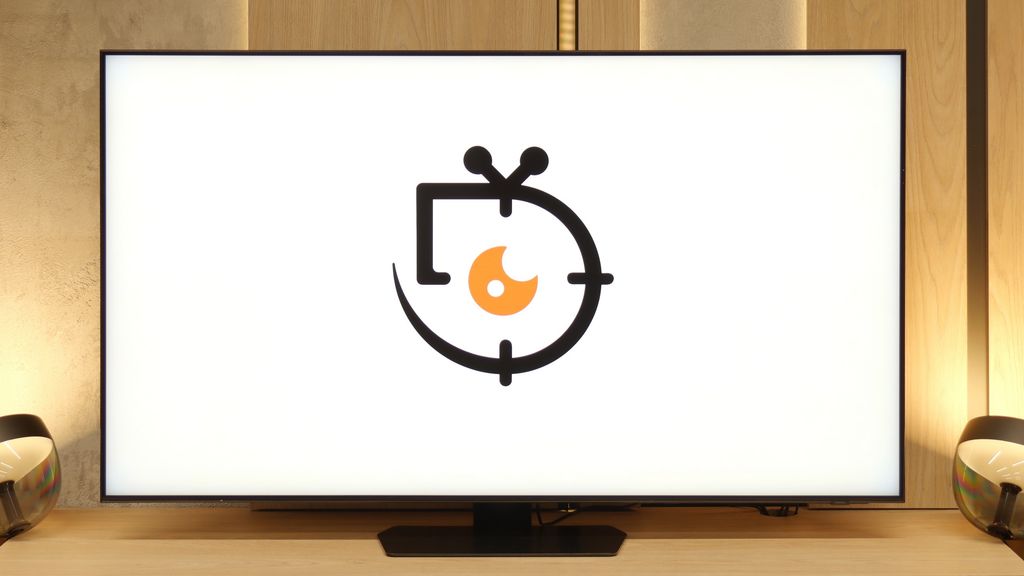
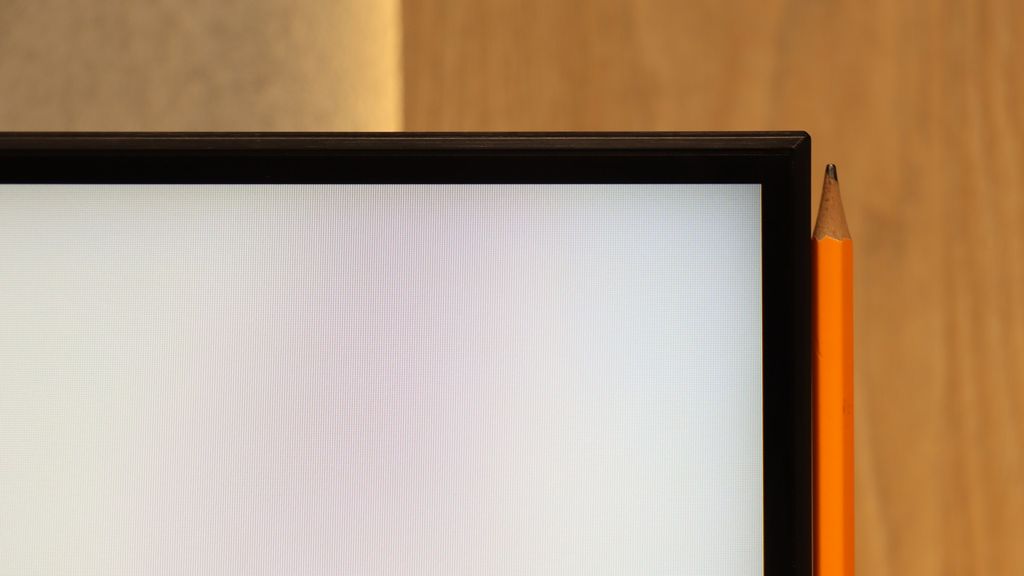
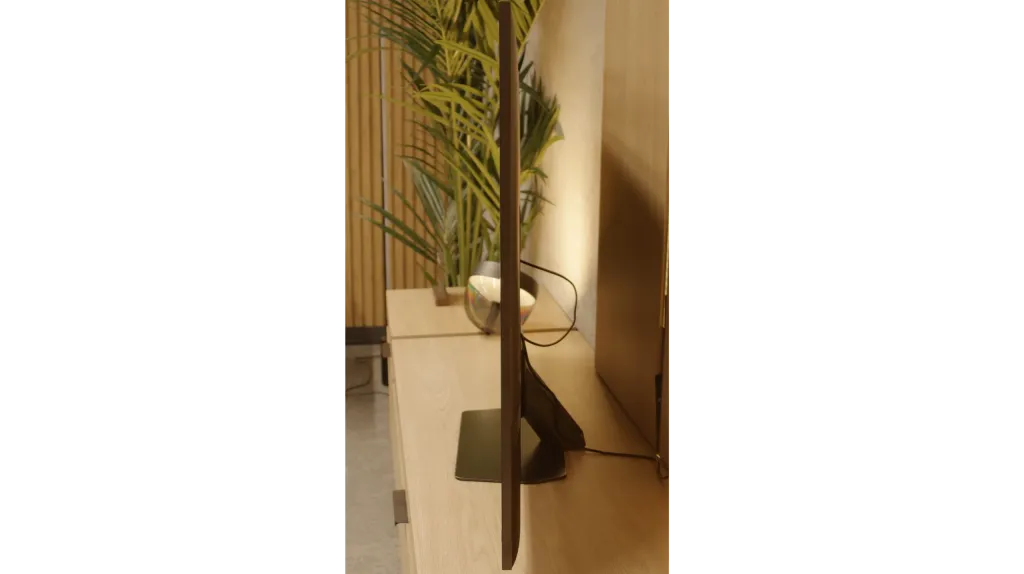
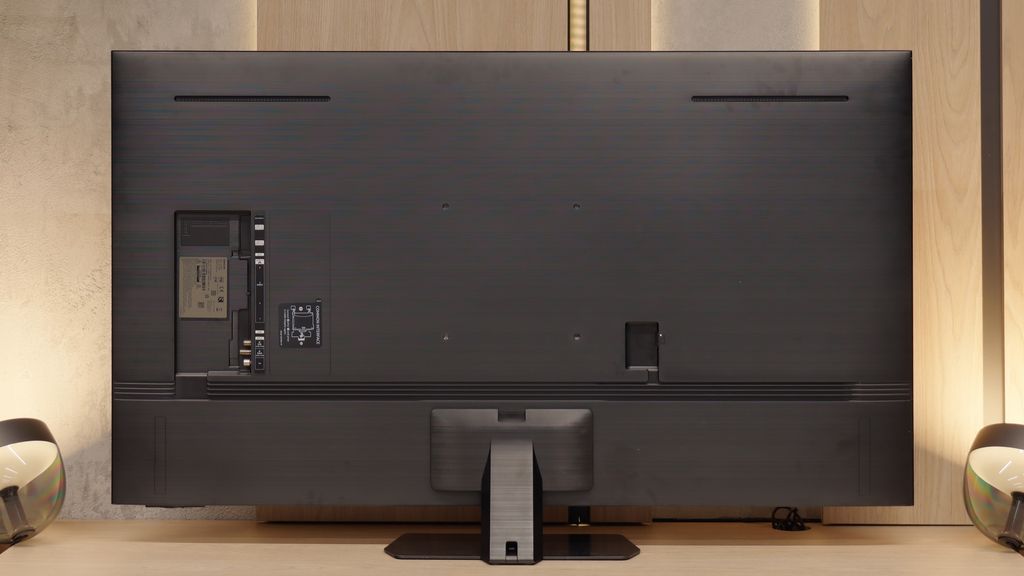
Contrast and black detail
8.3/10
8/10
Local dimming function: Yes, number of zones: 1344 (24 x 56)
Local dimming function: Yes, number of zones: 504 (14 x 36)
Contrast:

Result
∞:1

Result
218,000:1

Result
61,000:1

Result
10,500:1

Result
4,900:1

Result
1,530,000:1

Result
62,450:1

Result
186,400:1

Result
7,400:1

Result
4,500:1
Halo effect and black detail visibility:

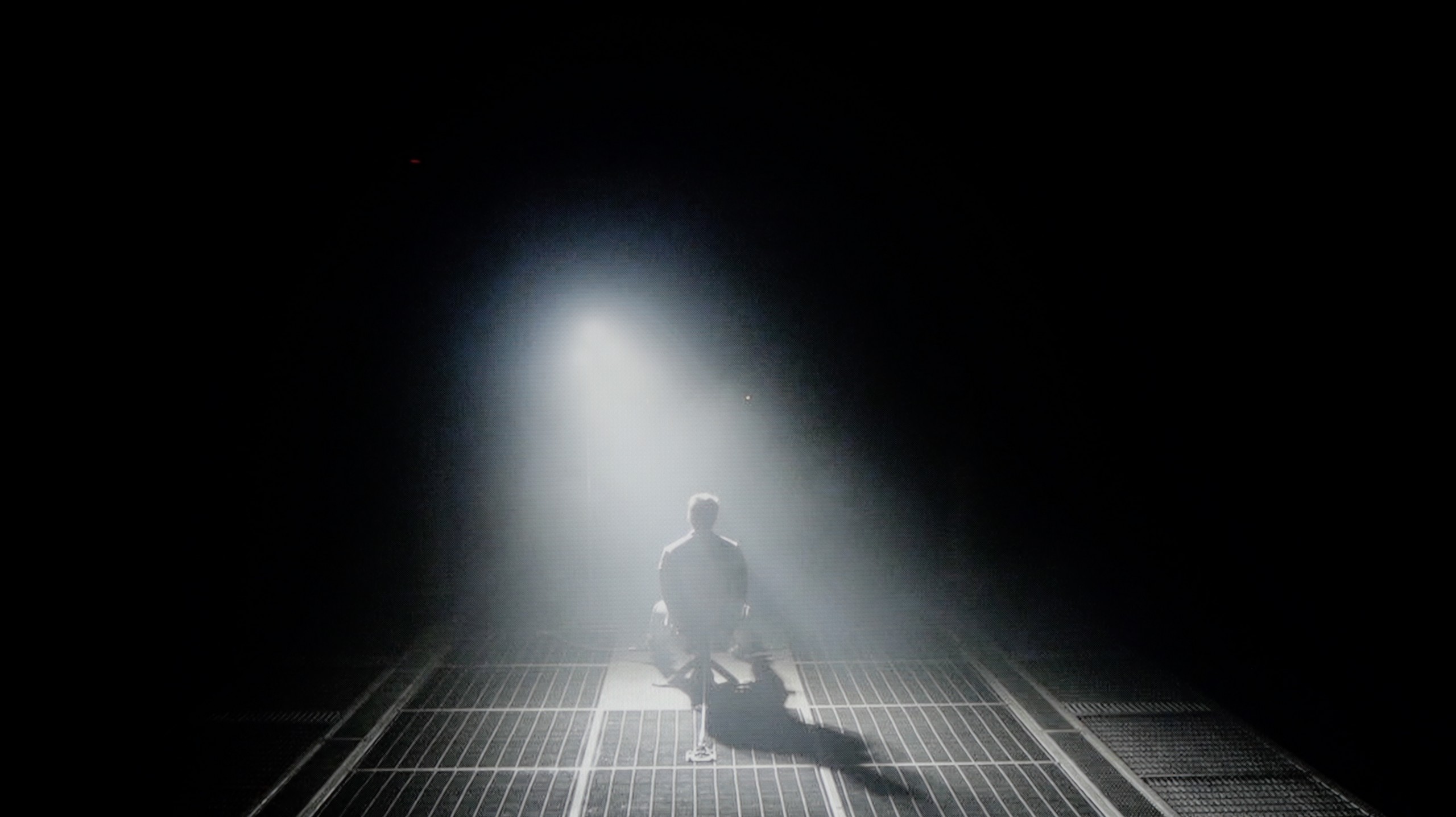
Samsung QN95D is a television that certainly attracts attention thanks to the use of a VA panel and innovative Mini LED backlighting. This model stands out with an impressive number of 1344 local dimming zones, achieving an exceptional level of contrast and black depth. It is worth noting that the number of backlighting zones may vary depending on the screen size – in larger models, these zones naturally increase, allowing for even better performance in terms of contrast and black levels. Mini LED, with smaller diodes, enables more precise control of backlighting, significantly enhancing the quality of the displayed image. The tested 55-inch model handles detail reproduction excellently, and its ability to adjust brightness in different parts of the screen results in a phenomenal visual effect. During our tests, Samsung QN95D on the test pattern from the film "Oblivion" surprised us with results that could compete with OLED televisions, offering nearly reference-level contrast. However, how does the television perform in more challenging conditions? In more demanding scenes, the local dimming algorithm may show some flaws. In some cases, on dark backgrounds, smaller bright elements may lose a lot of brightness, which we noticed during tests with the Pioneer Kuro test disc. Additionally, when we take a closer look (e.g. a scene from the film Sicario 2), some imperfections can be observed. The television sometimes struggles with brightness optimisation – in some scenes, it dims elements too much, while in others, it brightens the screen too intensely. These phenomena can be noticeable enough to capture the viewer's attention, especially in demanding night scenes. However, if we do not pay much attention to the mentioned imperfections, Samsung QN95D proves to be one of the best choices in terms of black depth among displays with MiniLED technology.
If we compare the contrast results of this year's QN90F with last year's QN90D, it quickly becomes clear that the differences are minimal. In the best film scenes, the contrast can reach values well over six figures, and sometimes even seven figures, which can be confidently considered as results almost infinite. And indeed – in typical cinematic shots, the effect closely resembles that known from OLED televisions. Samsung deserves praise because, despite the relatively "modest" number of dimming zones – 504 in the 55-inch variant (modest compared to Chinese competitors like Hisense U8Q or TCL C8K/C9K) – they have managed to fine-tune the local dimming algorithms. This is particularly evident in the most challenging scenes, where compared to last year's model, the precision of dimming has nearly doubled. Of course, we still do not have perfectly separated bright objects from black, and one cannot speak of an absence of halo effects (slight glows around small bright objects) known from MINI-LED televisions, so with OLEDs, the QN90F still does not win. But it is definitely closing the gap in a more mature and refined way than the year before.
HDR effect quality
6.7/10
7.4/10
Luminance measurements in HDR:

Result
1798 nit

Result
542 nit

Result
805 nit

Result
269 nit

Result
1528 nit

Result
1638 nit

Result
763 nit

Result
1119 nit

Result
562 nit

Result
1947 nit
Scene from the movie “Pan” (about 2800 nits)


Scene from the movie “Billy Lynn” (about 1100 nits)


Static HDR10


Dynamic: HDR10+
Dynamic: HDR10+


HDR luminance chart:
Samsung QN90F / QN92F
HDR luminance
Samsung Neo QLED QN95D
HDR luminance
Samsung QN95D handles HDR exceptionally well, achieving a peak brightness of around 2000 nits. In the tested movie scenes, where the screen is fully lit, the television provides intense and realistic representation of HDR content, significantly enhancing the visual experience. Nevertheless, similar to contrast, the dimming algorithm may sometimes show limitations. Despite the considerable number of Mini LED zones, the television does not surprise the user with incredible brightness. For instance, in scenes from the film "Life of Pi," where a bright moon appears against a dark background, and in excerpts from "Sicario 2," where a strong light effect occurs on a dark background, the television displays very poor results. At such moments, the television attempts to reduce the halo effect by darkening the image to a level reminiscent of SDR quality. As a result, blacks appear deep and uniform, but this comes at the cost of losing some detail in bright areas. It is a compromise aimed at maintaining the best possible quality of black, although it simultaneously causes the image to lose a bit of its dynamism. Despite certain flaws in the operation of the local dimming algorithm, this television deserves praise for its wide coverage of the DCI-P3 colour gamut. This is made possible by the use of a quantum dot coating, also known as QLED technology, which allows for vibrant and rich colours.
The Samsung QN90F can truly shine with brightness. In our measurements, it achieved over 2200 nits, which directly translates to the viewing experience. In practice, this means that when a film features a very bright scene – for example, a sunrise in The Meg – the screen looks as if it is actually lit by natural light. This is not just a number from a chart, but a real sense of image intensity! However, the television may not always deliver this full power. With smaller details like reflections or lamps, brightness drops to 500–700 nits. This is a deliberate decision by the algorithms – it allows for better control of the contrast between large and small elements, preventing the image from losing balance. Importantly, this is still a huge improvement compared to last year's QN90D, where similar details were often almost invisible, shining at just 200 nits. Here, the HDR effect is much more consistent and credible. The only downside is the colours. The DCI-P3 coverage has stalled at 91%, which in this price bracket can be considered a rather average result.
Factory color reproduction
5.9/10
5/10


Factory Mode
After calibration
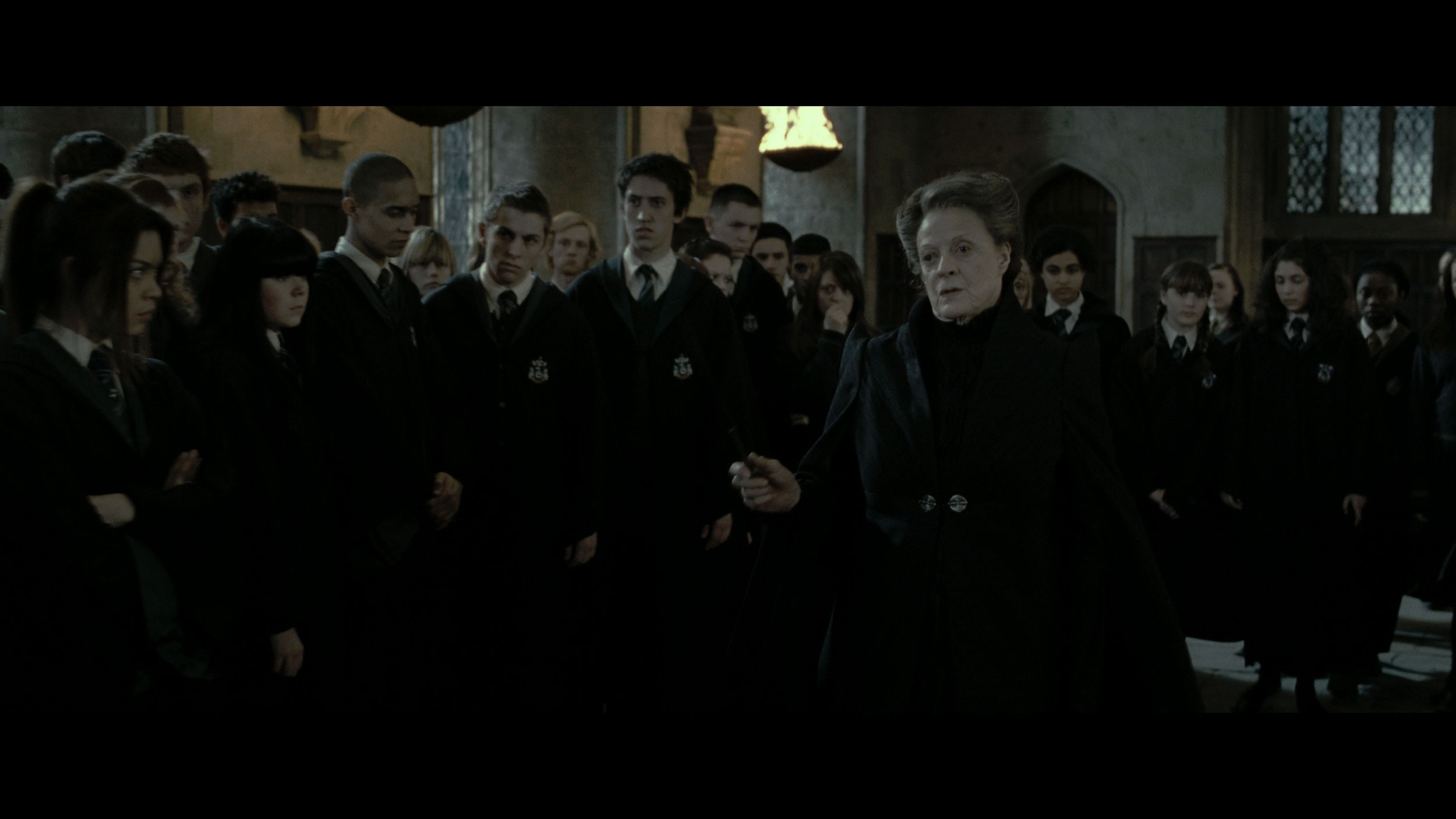
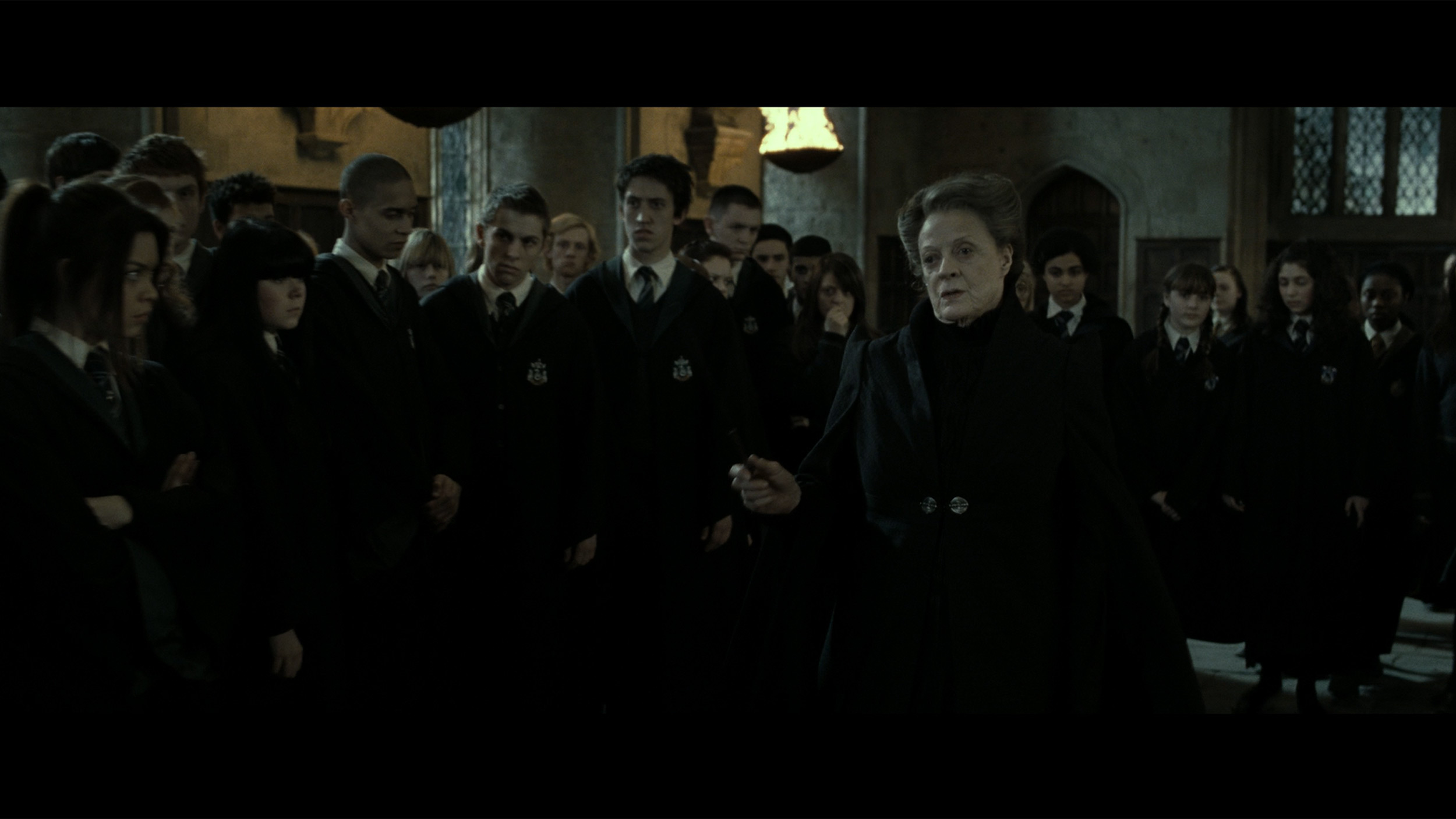
Factory Mode
After calibration
In the category of factory colour reproduction, the television Samsung QN95D was tested in Filmmaker mode, which offers the best settings from the manufacturer. Nevertheless, it is not entirely free from flaws. In the case of HD content, there is a noticeable colour deviation, particularly in white balance, where the red colour clearly dominates the graph. The situation improves with 4K HDR content; however, there are still significant drops in blue colour reproduction. These effects can be observed in a scene from the film "Star Wars," where the protagonist is depicted in overly warm tones.
As for contrast, we can observe an initial large jump on the gamma graph, indicating that the television effectively highlights the brighter parts of the image. However, at the end of the graph, we notice a distinct drop, which may mean that in darker tones, details can be lost. Such a shape of the gamma curve can affect the way users perceive dark scenes, where some details may become too blurred or too dark, causing the image to lose clarity. It is also worth noting the curve responsible for brightness (EOTF), which is quite correct, except for the initial drop.
Although Samsung QN95D boasts impressive parameters and advanced technologies to deserve the title of one of the best televisions on the market, it requires certain adjustments in colour reproduction and contrast to fully utilise its potential.
The colour reproduction of the QN90F was tested in Filmmaker mode and, as is often the case with Samsung televisions, this mode proves to be the best starting point straight out of the box. However, this does not mean that the image is free from flaws. The white balance in both SDR and HDR content was surprisingly good – the colours did not drift in any direction and even in its factory settings, it looked solid. A problem arose with the gamma curves and EOTF, which dictate how the television manages brightness. Here, the QN90F significantly brightened the entire image, causing blacks and colours to lose their intensity, and the overall effect resembled that of an applied milky filter. Fortunately, Samsung, unlike many competitors in the miniLED world, provides the user with plenty of tools to control the settings that we do not find with other manufacturers, such as Chinese producers. Therefore, we decided to see if we could squeeze the full potential out of the QN90F because we know that such a high-end series is capable of much more.
Color reproduction after calibration
8.9/10
9/10




After calibration, the picture on the Samsung QN95D television achieves truly impressive results. The white balance is perfectly aligned, and error readings rarely exceed 2, which means that colours are displayed very accurately. Most samples from the Color Checker test fall within an acceptable error range, confirming that the television reproduces hues excellently. The contrast has also improved significantly, and the gamma curve is more stable, resulting in better visibility of details in both dark and bright scenes. However, it is worth noting the EOTF (Electro-Optical Transfer Function) curve, which shows some discrepancies in film tests. Although the television performs well in most scenes, details in the blacks can still be lost in more extreme cases – this is due to an aggressive dimming algorithm.
Nevertheless, these minor imperfections do not detract from the overall picture quality. After calibration, the Samsung QN95D impresses with its visual quality, offering an exceptional experience that will certainly satisfy anyone looking for a top-tier television.
After our adjustment of the settings, the QN90F displayed what it is truly capable of – and it must be admitted that this is one of the best images we have seen on a miniLED screen this year. As we mentioned earlier, the white balance was not a major issue even in its factory state, but only after gamma calibration did it manage to get close to reference values. The same is true for HDR content, where the EOTF curve post-adjustment presents mature and cohesive results. Indeed, in some films, it is noticeable that the smallest elements of the image are slightly brightened, and with a limited number of dimming zones, there is still a risk of halo effect. However, it should be remembered that such phenomena are characteristic of all miniLED televisions, and it is difficult to expect miracles even from the QN90F. The most important thing is that after calibration, the television delivers an image that, in terms of representing the director's vision, confidently competes with many OLED screens available on the market.
Smoothness of tonal transitions
9.1/10
8.9/10





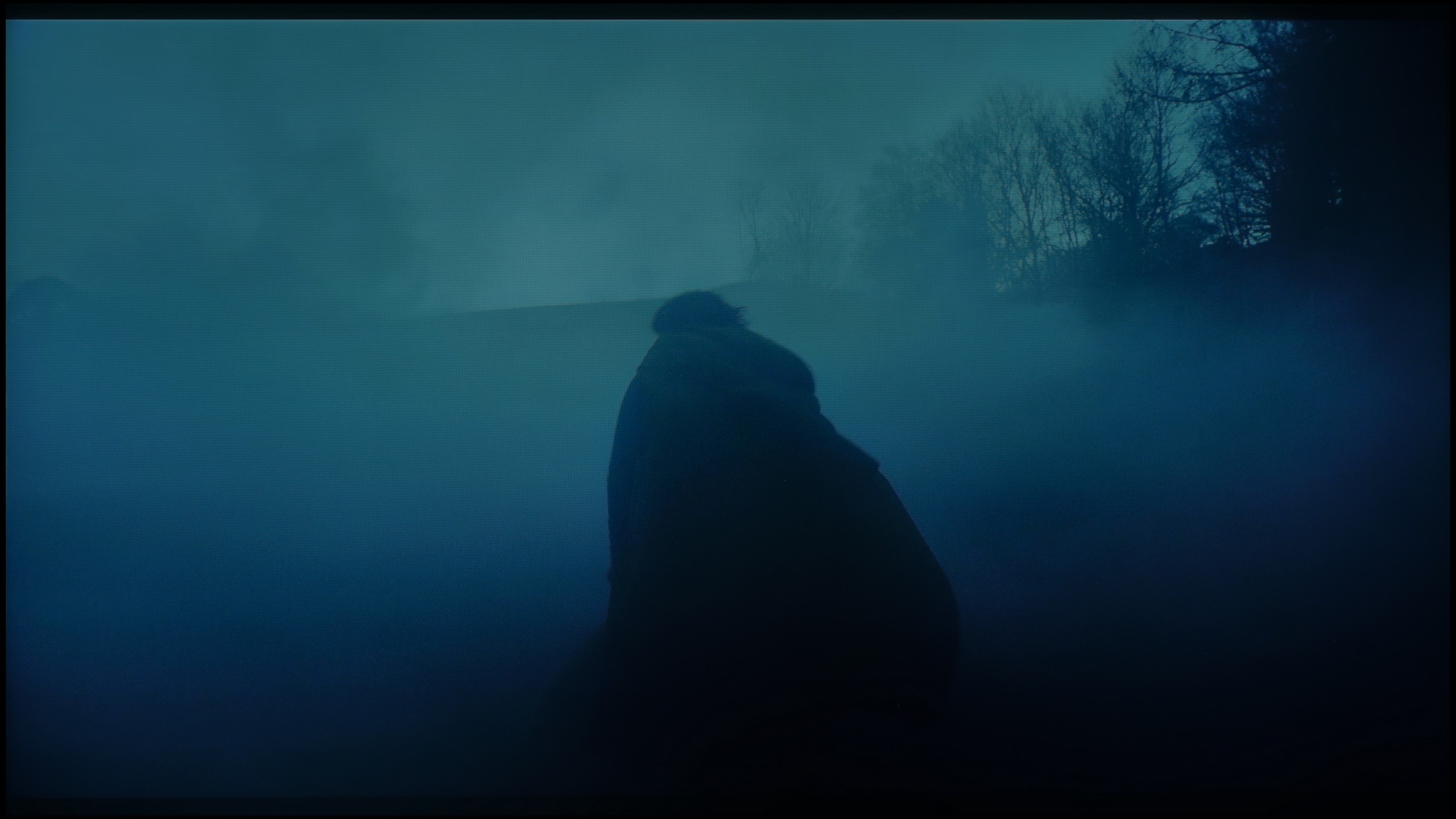






The fluidity of tonal transitions is one of the strongest points of the Samsung QN95D television, which received a very high rating in this category. Such results are rarely seen in televisions that offer such high brightness. Thanks to the precise operation of the panel, tonal transitions are exceptionally smooth and natural. The only noticeable shortcomings might be slight errors around the blacks, but they are subtle enough that most users are unlikely to notice them. This makes the Samsung QN95D an excellent choice for those who value image quality and detail, especially in scenes with complex lighting.
The tonal transitions in the QN90F are at a very good level. Regardless of the scene being tested, it was difficult to identify any significant issues with colour blending or visible banding. Even in demanding sequences, such as the scene from the film Green Knight, where the actor immerses himself in red water, the picture appeared smooth and natural. Indeed, with careful viewing, one might spot minor micro-imperfections – for example, in the greys or in very bright shots – but they do not affect the overall perception. The television performs well enough that most viewers are unlikely to notice these imperfections.
Image scaling and smoothness of tonal transitions
7.2/10
7.5/10
Smooth transition function

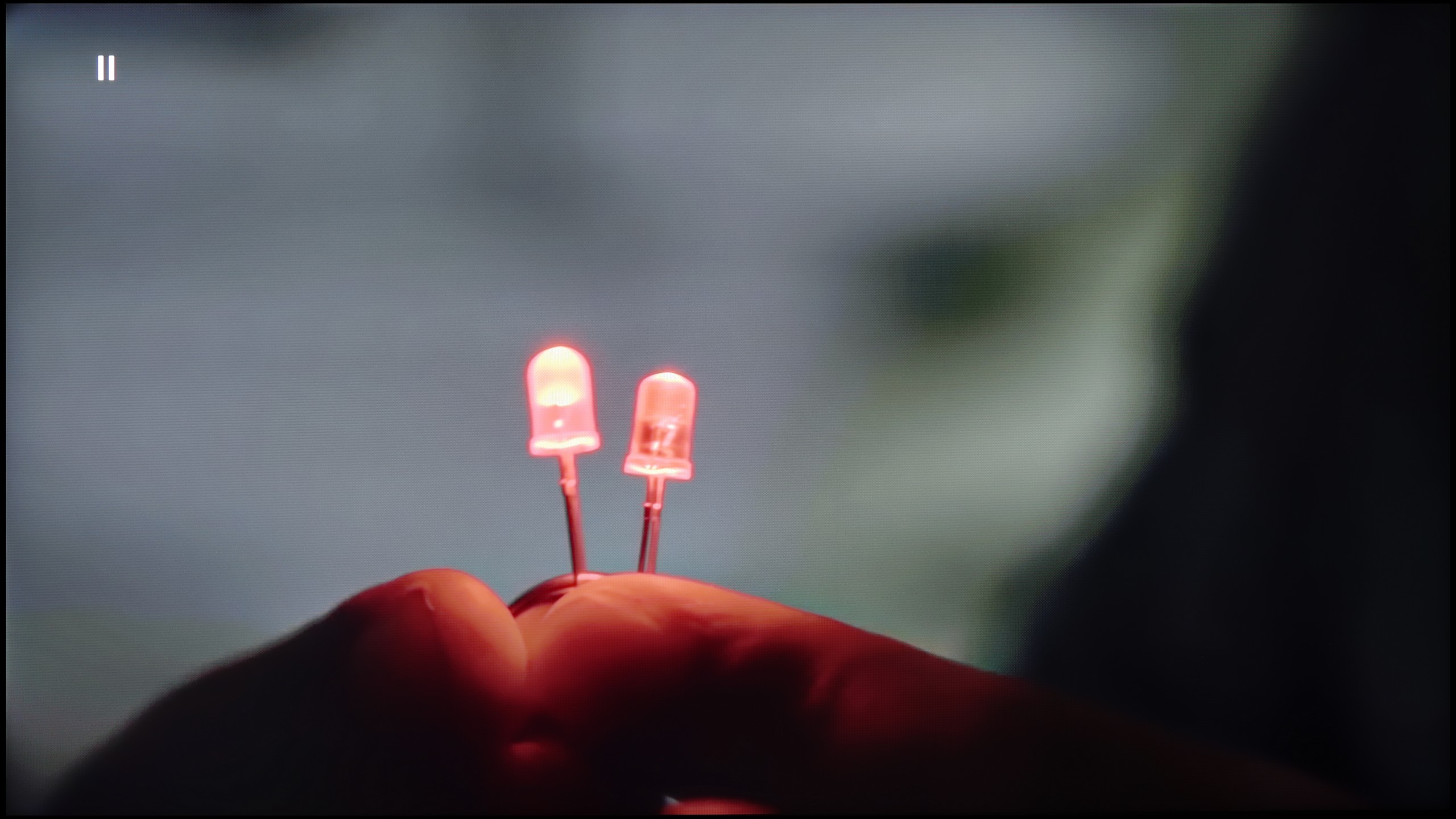
Image without overscan on the SD signal


The Samsung QN95D television handles tonal transitions even in lower quality materials, thanks to the noise reduction feature employed, which functions like a gentle gradation. This feature is extremely effective, smoothing out the image and eliminating unwanted noise while significantly improving the quality of the displayed material. However, as is often the case, too much effectiveness can lead to unintended side effects. In some materials, this feature may also blur elements that should remain sharp, such as film grain.
Despite this, the television performs well in the context of image scaling, eliminating larger jagged edges. In a scene where branches are visible, they are not excessively artificially sharpened, allowing for a natural appearance, and the model does not have an artificial outline. Overall, this means that even in more challenging conditions, the film material presents itself satisfactorily on the Samsung QN95D. The only downside when watching HD/SD content (such as regular terrestrial television) is the fact that we have a slightly cropped image – this is caused by the so-called overscan, which cannot be turned off.
QN90F handles upscaling very well. Materials in lower resolutions, even SD, are enhanced to a clear and sharp image, in which a lot of detail in the background can be seen. This is a significant advantage, as the television makes older content or everyday television look considerably better than on most budget screens. However, the issue of overscan remains, which is the trimming of the screen edges, and this cannot be turned off in Samsung TVs. This can cause some subtitles on the screen to disappear or Auntie's face from the wedding on the VHS tape to be slightly cut off. 😉
Digital image processing also works well. In the menu, we find a function called "noise reduction," which can smooth tonal transitions and improve the reception of lower quality materials, e.g. from YouTube. At the medium setting, the effect is most beneficial – it does not heavily interfere with details, while eliminating the problem of "stepping" in colours. However, it is worth remembering that the function can be quite aggressive and removes natural grain from older films, so it is best to use it in moderation.
Blur and motion smoothness
7.5/10
7.8/10

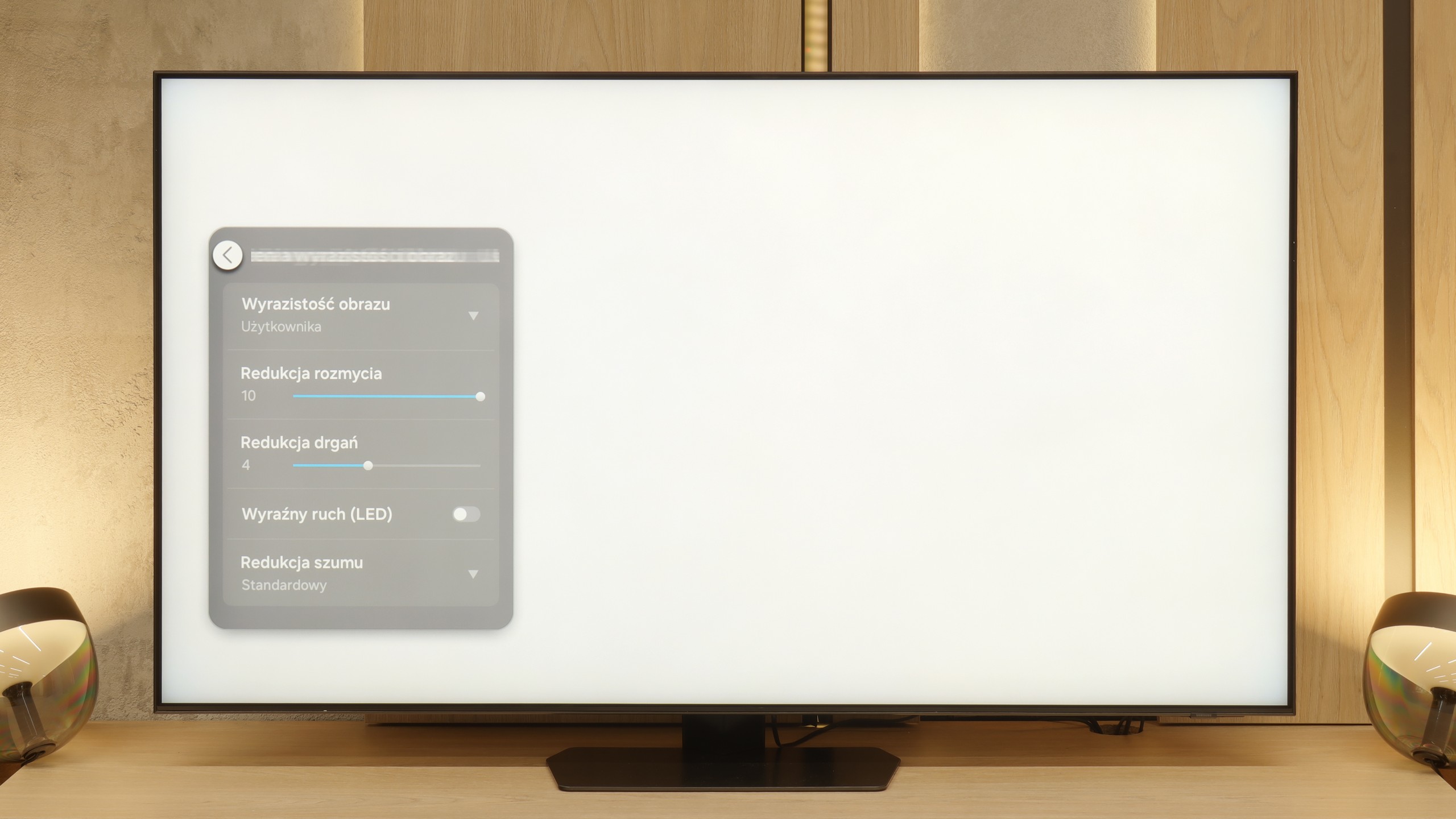
Blur (native resolution, maximum refresh rate):






Blur (BFI function enabled):
Image flickers in this mode



Image flickers in this mode



Smużenie ():
Smużenie (4K@165Hz):


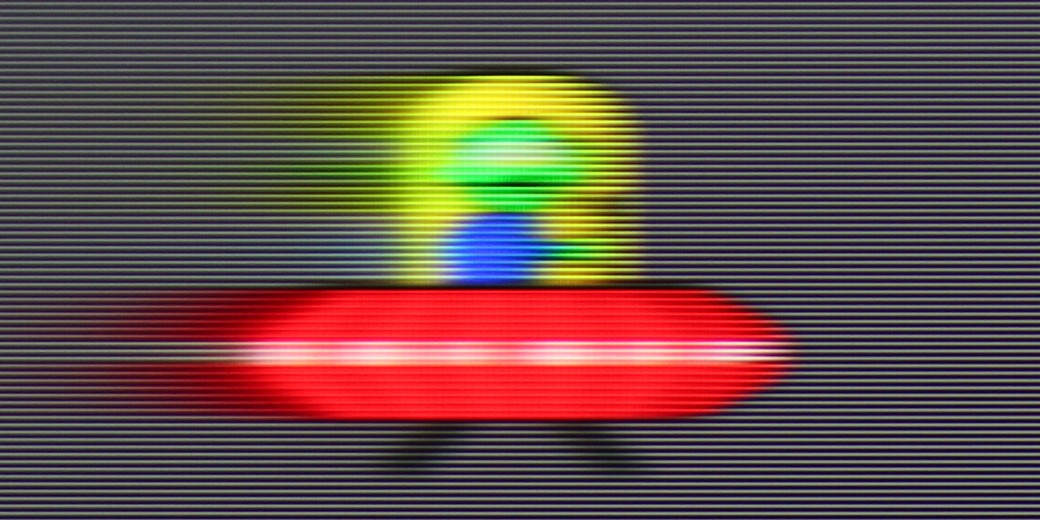
The panel in Samsung QN95 performs very well in terms of motion blur and smoothness of movement. With a refresh rate of 120 Hz and features for reducing blur and judder, the picture settings can be customised to personal preferences, whether for watching films or for dynamic sports broadcasts. The user has the option to adjust the smoothness of the image on a 10-point scale – from a more frame-like appearance reminiscent of traditional film to a smooth, almost theatrical effect, which works particularly well for sports transmissions.
The QN90F is equipped with a panel that has a maximum refresh rate of 165 Hz, and although this advantage will primarily be appreciated by PC gamers, it is still worth highlighting. In films or sports broadcasts, we are limited to the classic 120 Hz, but this is not a cause for concern. In practice, the additional motion smoother is of greater importance here. With the "Motion Clarity" setting, we can adjust the picture to our own preferences. The blur reduction option is responsible for fluidity and ghosting in sports. Meanwhile, the "judder reduction" function improves motion smoothness in productions shot at 24 frames, such as films and series. If we set it high, the film appears smoother and more fluid than it was actually shot. Lower values, on the other hand, preserve its cinematic "rawness" with a visible film frame.
Console compatibility and gaming features
9.5/10
8.2/10
- ALLM
- VRR
- VRR range48 - 144Hz48 - 165Hz
- Dolby Vision Game Mode
- Correct implementation of HGIG
- 1080p@120Hz
- 1440p@120Hz
- 4K@120Hz
- Game bar

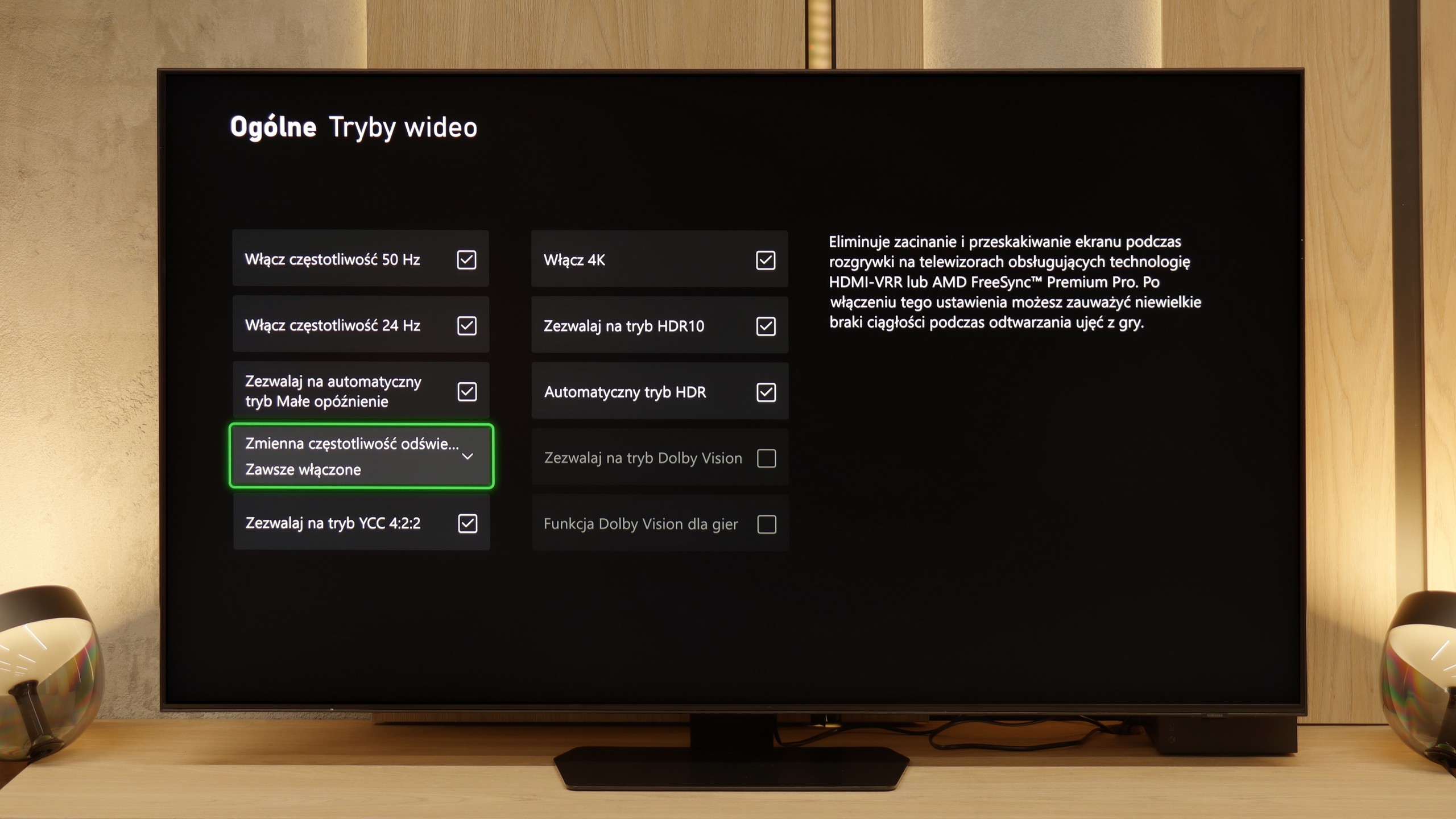

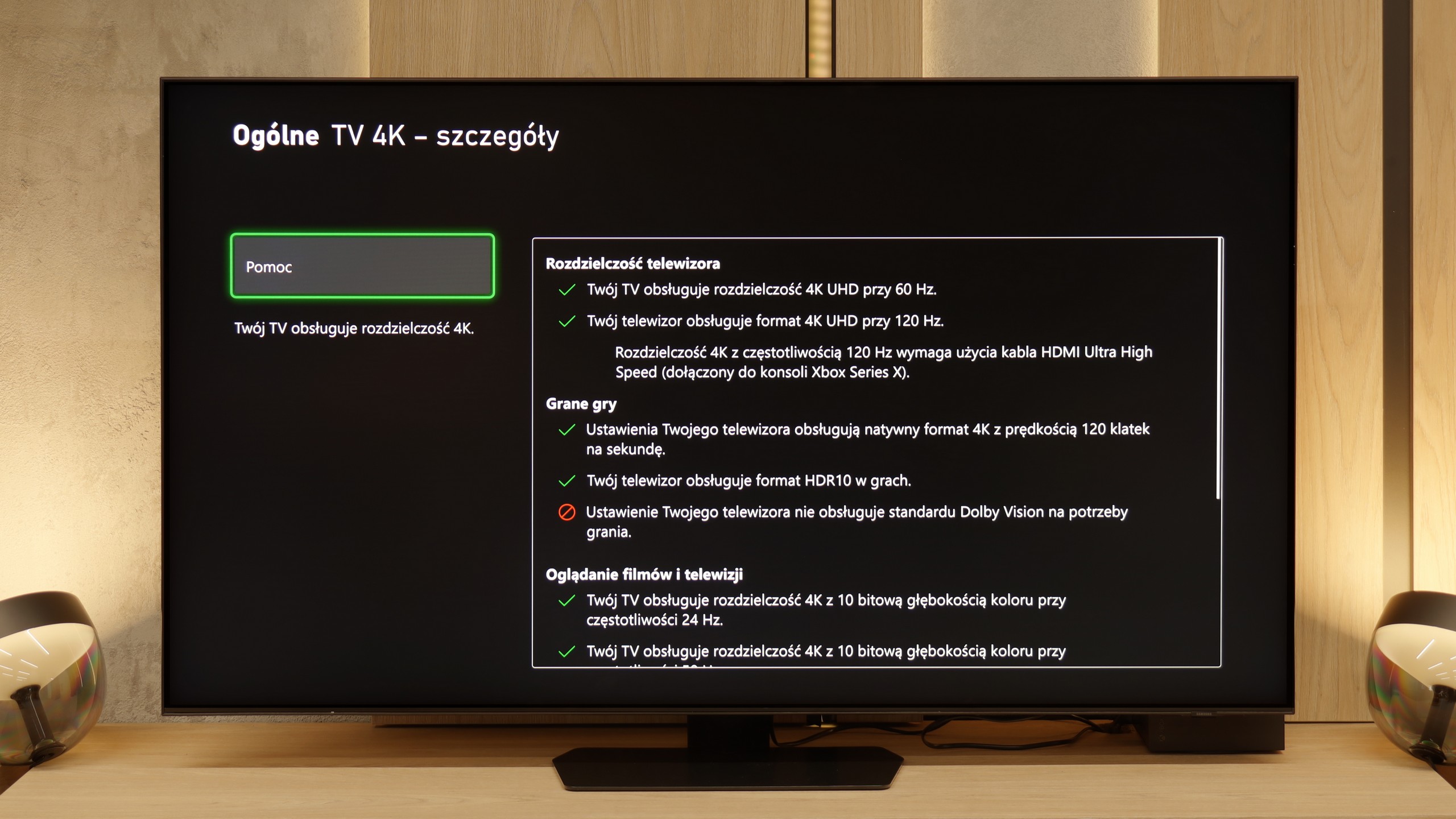

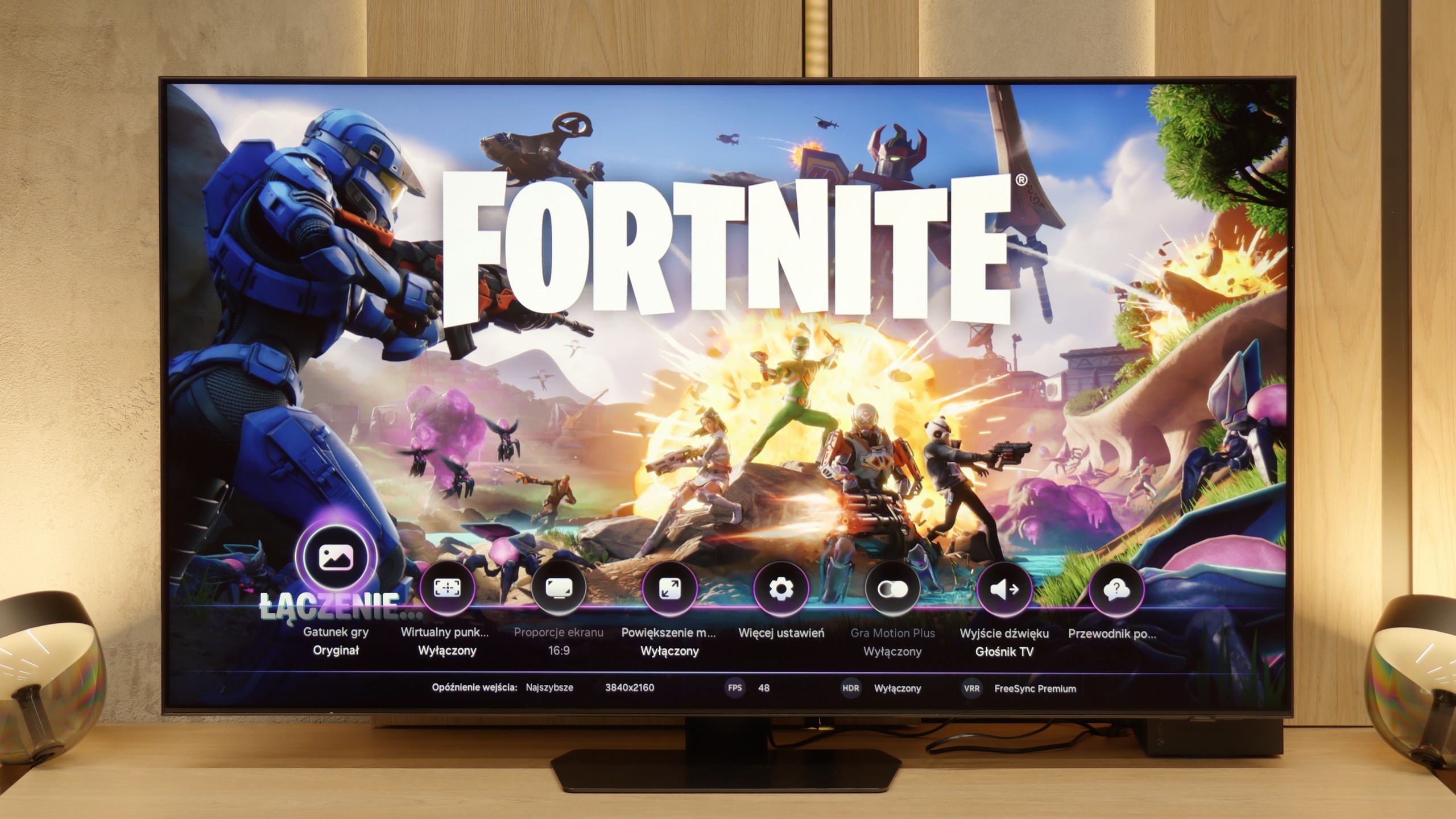

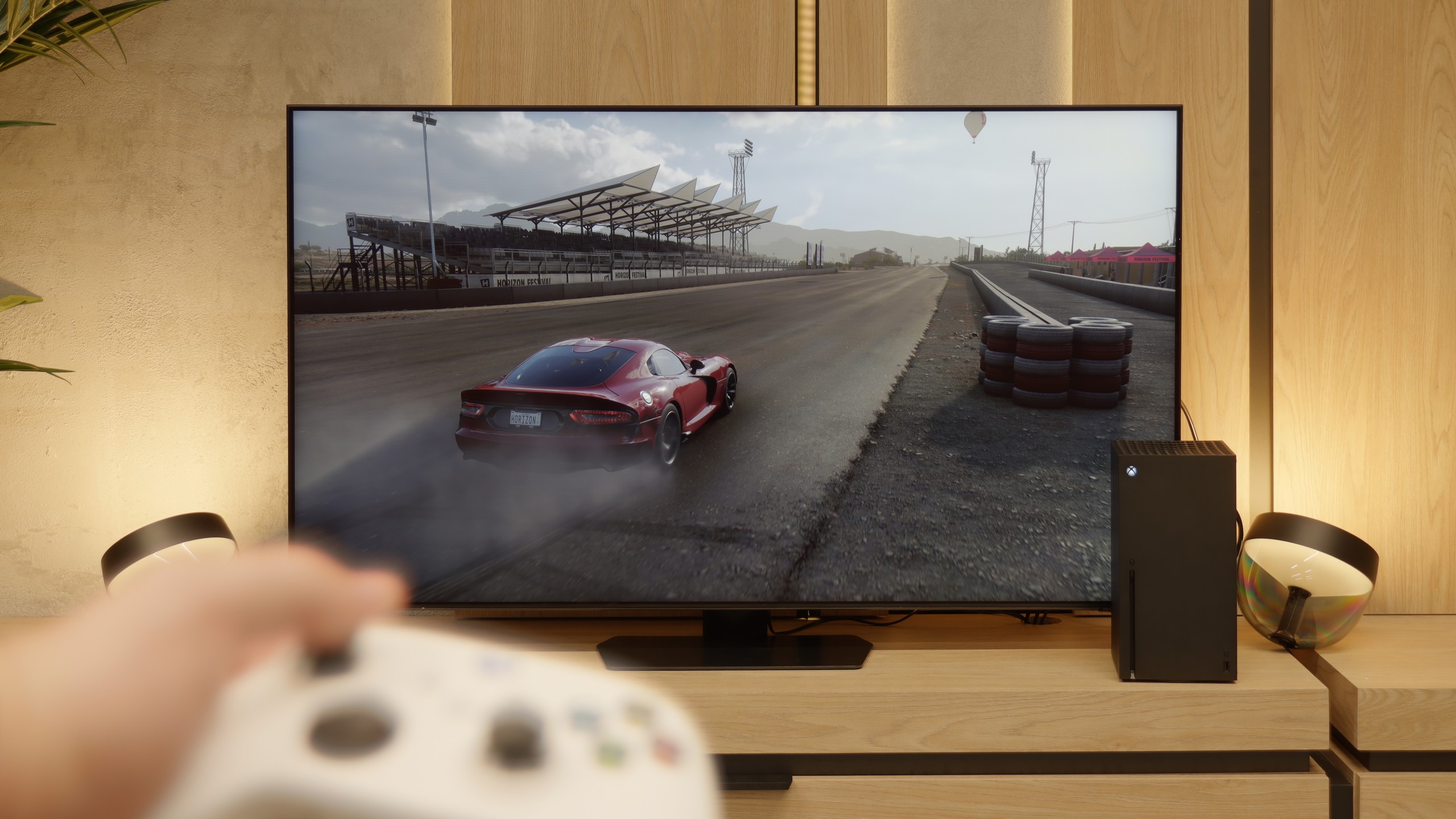
Samsung QN95D offers quite a few features that gamers will appreciate. First and foremost, the television supports variable refresh rate (VRR), which allows for smoother gameplay, eliminating issues with tearing, especially during dynamic scenes. We also find the auto low latency mode (ALLM) feature, which automatically switches the television to low latency mode when it detects a connected console or computer, ensuring more responsive controls.
Furthermore, the QN95D Samsung has a game mode that reduces input lag to a very low level, which is crucial in games where reflexes play an important role. With a high refresh rate of 120 Hz, the picture is exceptionally smooth, significantly enhancing the experience of fast-paced action games and sports productions. The television also supports G-Sync and FreeSync technologies, which further enhance gameplay smoothness and improve user comfort. An interesting addition is the 'Game Bar' – a special menu that provides quick access to all game-related settings, allowing easy adjustments of picture and parameters to suit user preferences without the need to interrupt gameplay.
Although the Samsung QN95D does not support Dolby Vision – which is quite obvious for Samsung televisions – it does offer the HGiG feature, which ensures appropriate picture quality in HDR games, in line with the creators' vision.
QN90F has almost everything to become the perfect television for gamers. Features such as four HDMI ports, VRR, ALLM, and refresh rates reaching up to 165 Hz hardly need reminding. It deserves high praise for the Game Motion Plus mode, which is an original motion smoother for games. Thanks to it, you can add a few “artificial” frames and make the image generated by the console look smoother than it should. This is a very unique solution in the world of televisions – competing systems usually do not offer this – and that is why Samsung has had a strong bargaining chip among gamers for years, even despite the lack of support for the still niche Dolby Vision in games.
So why do we refer to it as an “almost” perfect screen? Unfortunately, similar to recent Samsung models, we noticed a problem with the absence of the HGiG feature. This is a solution that allows the television to leave the control over tone mapping to the console, so that games look exactly as the creators intended. What’s worse, this feature was previously present and disappeared after software updates. Instead of minor improvements, we received a step backwards. It’s a shame, because without this deficiency, the QN90F could truly be the ideal choice for gamers in the miniLED category.
Input lag
9.8/10
9.6/10
SDR
HDR
Dolby Vision
QN95D Samsung stands out with excellent input lag performance, achieving values below 15 ms. This is an impressive result that is not dependent on resolution or refresh rate. With such low latency, gamers can enjoy the TV's instant response to their commands, which is crucial in dynamic games. Whether we are playing 4K titles at 120 Hz or lower resolution games, the QN95D ensures exceptional gameplay smoothness and precise motion rendering. Such a level of responsiveness makes the TV an ideal choice for any avid gamer.
The input lag on the QN90F is very low. For 120 Hz content, it is about 10–12 ms, and at 60 Hz, it drops below 20 ms. These are values that can confidently be called exemplary. The slightly higher input lag – by 1–2 ms – is due to the fact that the lowest latencies, below 10 ms, are reserved for the 165 Hz mode. However, regardless of the resolution or refresh rate, you can count on the fact that the QN90F always responds quickly and responsively to our movements on the controller or keyboard and mouse.
Compatibility with PC
8.6/10
8.8/10

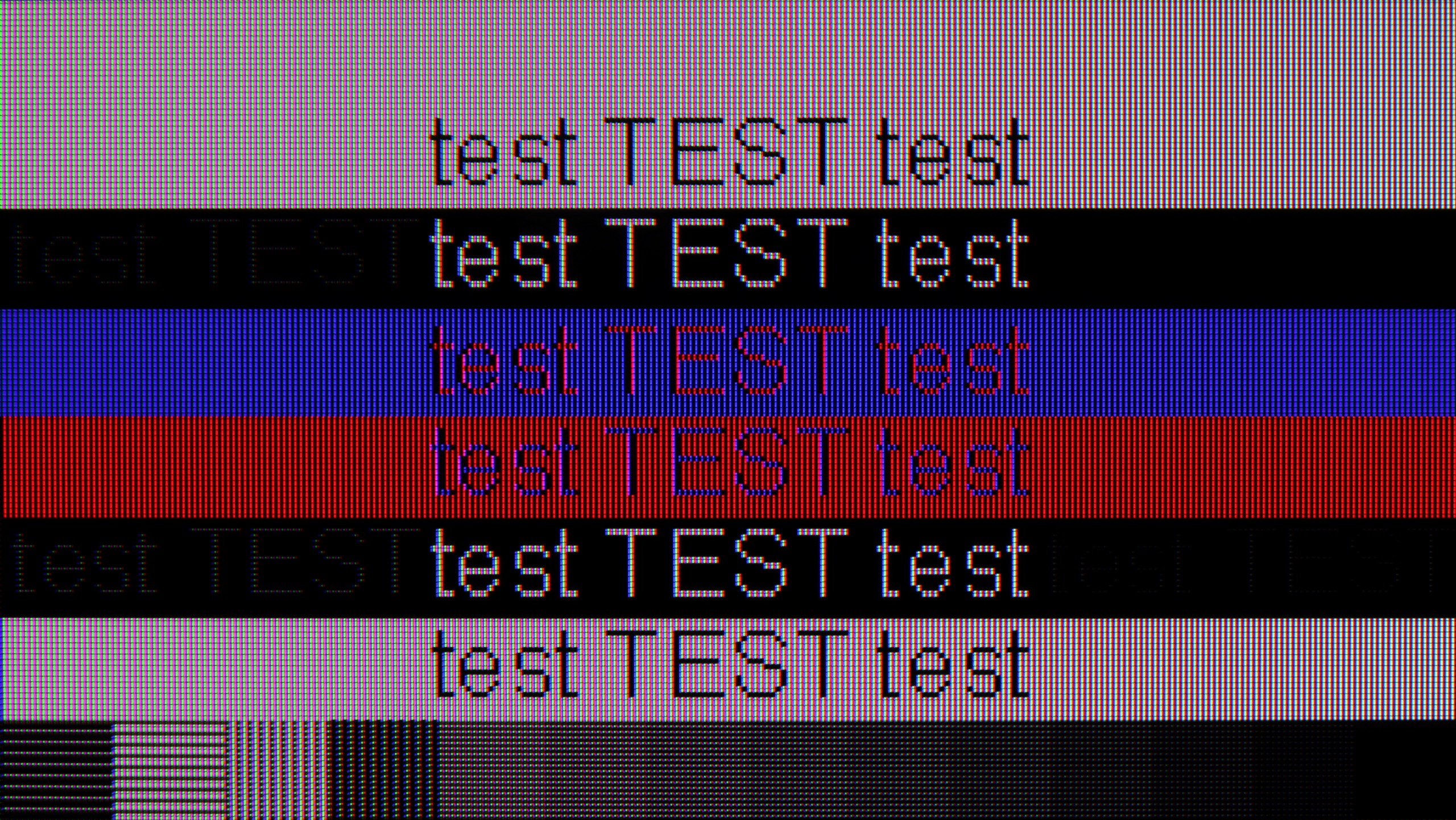
In the category of collaboration with a PC, the Samsung QN95D television stands out with its high performance, offering support for 4:4:4 chroma and impressively low input lag. Thanks to these features, users can enjoy fluidity and responsiveness, making it an ideal choice for office work or everyday applications. However, one noticeable issue is the poor visibility of horizontal lines on a dark background. In the test image on the right, it is evident that the letters resemble vertical lines, which can be somewhat frustrating. Nonetheless, the television generally offers good compatibility with a computer, and users can expect comfortable operation in their daily tasks.
Collaboration with a PC is another strong point of the QN90F. It is a screen that works well for both work and gaming. This makes sense especially in smaller sizes, such as 43 inches, where the television can easily fit on a desk. The 165 Hz mode, designed primarily for PC gamers, supports technologies such as G-Sync and AMD FreeSync Premium Pro, ensuring smooth and highly responsive gameplay. Office work performs equally well – the readability of fonts is high due to the proper handling of chroma. However, we noticed that switching the refresh rate from 165 Hz to 120 Hz significantly improves the readability of very dark text and thin lines. Therefore, if someone wants to use the QN90F as a work monitor, it is worth considering the 120 Hz mode.
Viewing angles
7.1/10
3.6/10
In the case of TVs with VA panels, one can usually expect limited viewing angles; however, QN95D Samsung surprises in this category. Thanks to the applied coating that widens viewing angles, the TV offers really good performance, which is rarely seen in devices with this type of panel. Although VA panels are usually not the best in this regard, in this model, the picture remains clear and vivid even when viewed from the side, making it an excellent choice for larger rooms and group watching.
The viewing angles on the QN90F are rather average and typical for LCD screens with a VA panel. It’s a bit of a shame that Samsung has foregone additional coatings to widen the viewing angles in this model – probably at the expense of using a matte panel. The effect is that with a greater angle from the centre, the drop in brightness is quite significant, and the colours lose their intensity. This is a compromise that one has to consider when opting for a screen with a classic VA panel.
TV efficiency during daytime
6.5/10
7.2/10

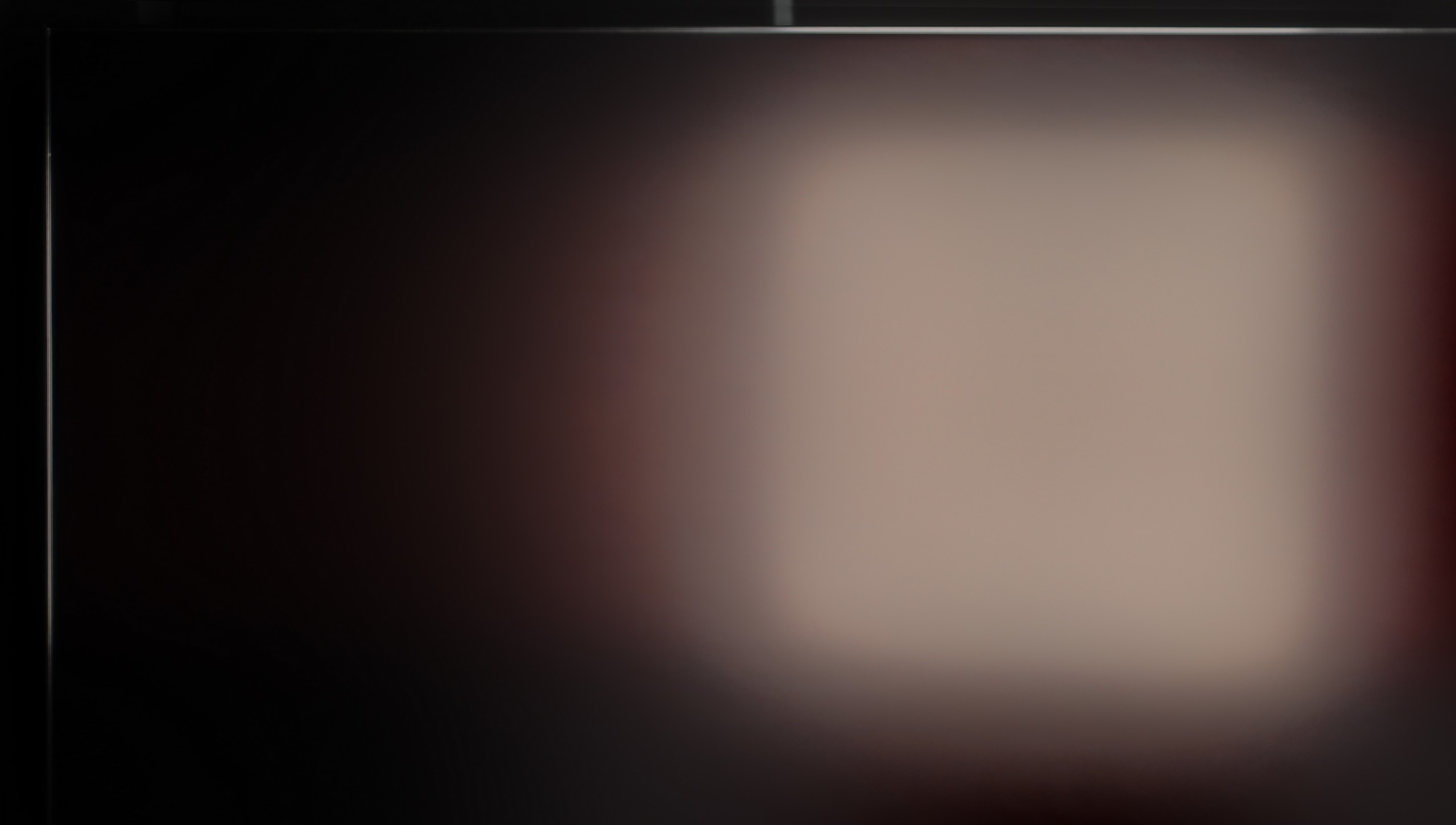


Matrix brightness
Average luminance SDR
Samsung QN90F / QN92F: 665 cd/m2
Samsung Neo QLED QN95D: 655 cd/m2
In the daytime performance category, QN95D Samsung, despite using a glossy panel, may struggle with highly visible reflections on the screen. As seen in the photo on the right, the lamp disperses to the left and right, which is a result of the anti-reflective coating used. However, overall this coating performs very well when the television displays any colours other than black, where reflections become more noticeable. It is worth noting that the television achieves very high brightness for SDR content, exceeding 650 nits, which provides comfortable viewing even in bright rooms.
QN90F is the first Neo QLED 4K with a matte display, and it must be said that this change is felt immediately. During the day, the screen behaves quite differently than typical LCD televisions – reflections are heavily subdued, and glares almost disappear, so there’s no need to constantly cover windows or fiddle with furniture placement. Colours in a bright room look natural, although their intensity can slightly drop under very strong lighting. However, this is not something that significantly spoils the viewing experience – rather a minor price to pay for the comfort of watching in sunlight. Additionally, there’s an average SDR brightness of around 700 nits, which means that the television can easily "cut through" in very sunny living rooms. It's hard to recommend anything better: if someone is looking for a miniLED 4K television that can cope in a brightly-lit living room, the QN90F is one of the most reliable choices.
Details about the matrix
Subpixel Structure:

Panel uniformity and thermal imaging:

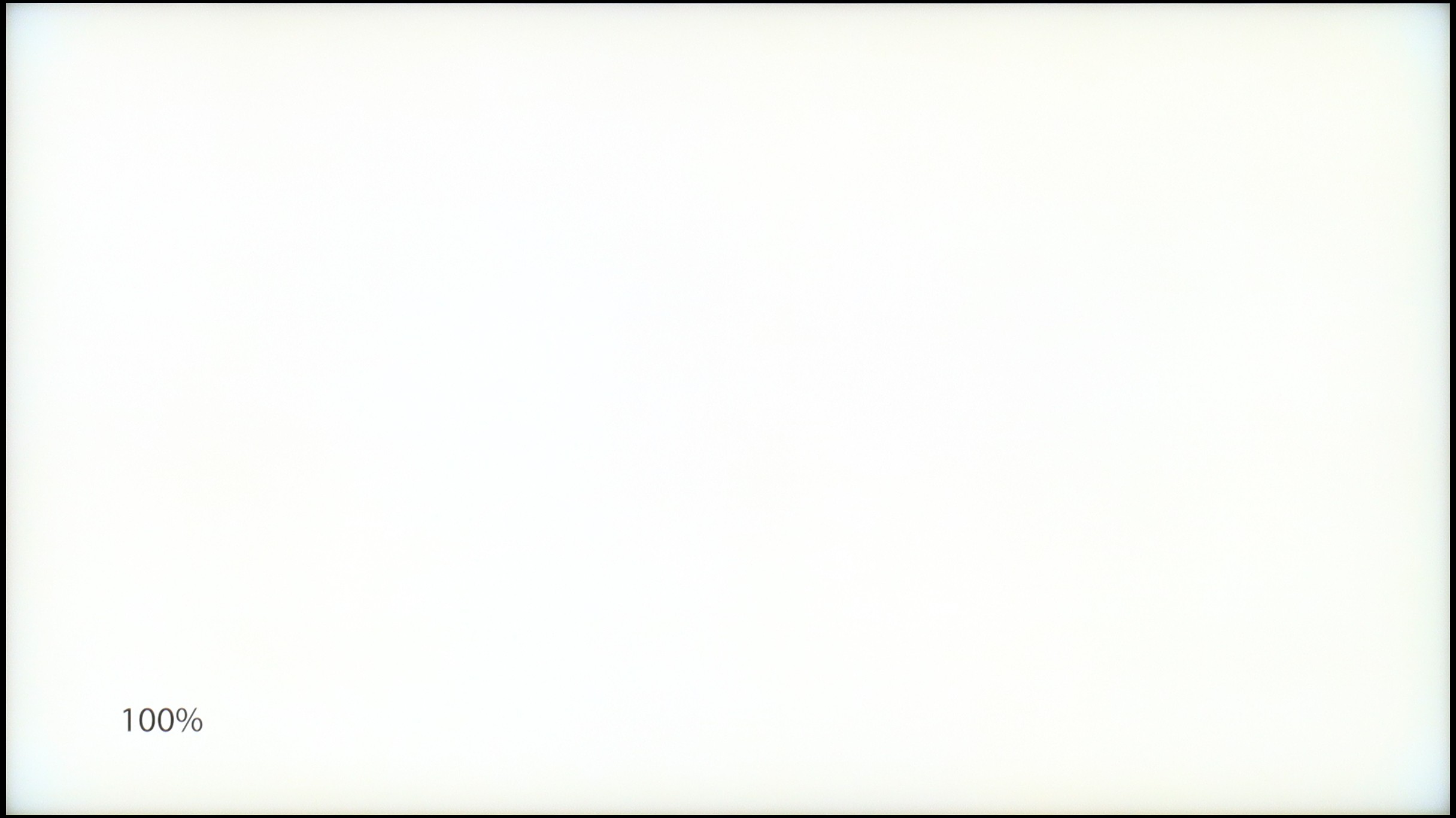
Samsung Neo QLED QN95D
Samsung QN90F / QN92F
TV features
6.7/10
7.7/10
- HDMI inputs0 x HDMI 2.0, 4 x HDMI 2.1 48Gbps0 x HDMI 2.0, 4 x HDMI 2.1 48Gbps
- OutputsToslink (Optical audio), eARC (HDMI), ARC (HDMI)Toslink (Optical audio), eARC (HDMI), ARC (HDMI)
- Network InterfacesWi-Fi 2.4GHz, Wi-Fi 5GHz, Ethernet (LAN) 100MbpsWi-Fi 2.4GHz, Wi-Fi 5GHz, Ethernet (LAN) 100Mbps
- TV receptionDVB-T, DVB-T2, DVB-S, DVB-S2, DVB-CDVB-T, DVB-T2, DVB-S, DVB-S2, DVB-C
Classic features:
- Recording to USB (terrestrial TV)
- Recording programming
- Picture in Picture (PiP)
- RF remote control (no need to aim at the screen)
- Backlit remote control
- Teletext
- Audio only mode
- Bluetooth headphones support
- Simultaneous Bluetooth headphones & TV audio
Smart features:
- AirPlay
- Screen mirroring (Windows Miracast)
- Voice search
- Voice search in native language
- Ability to connect a keyboard and mouse


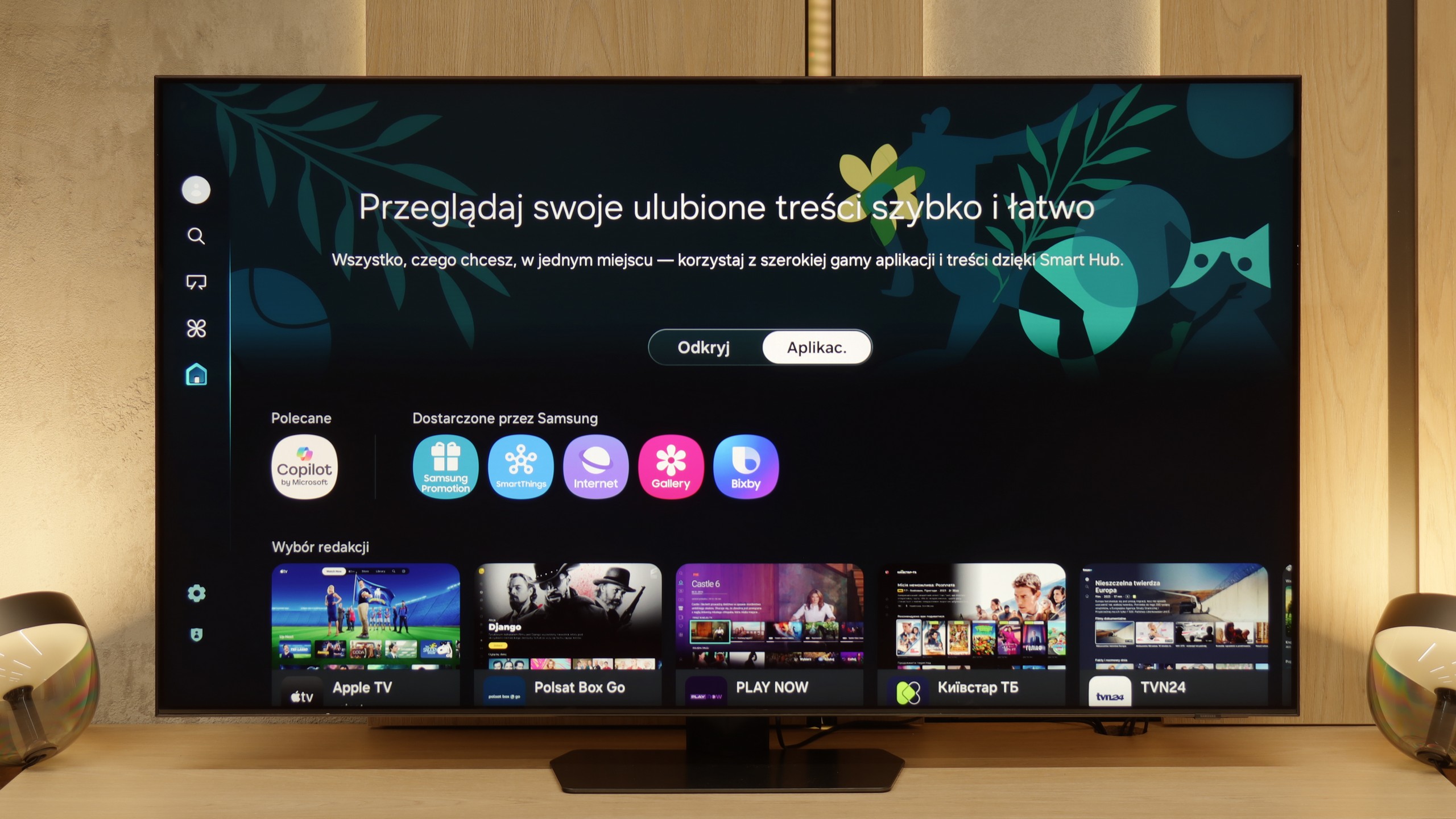
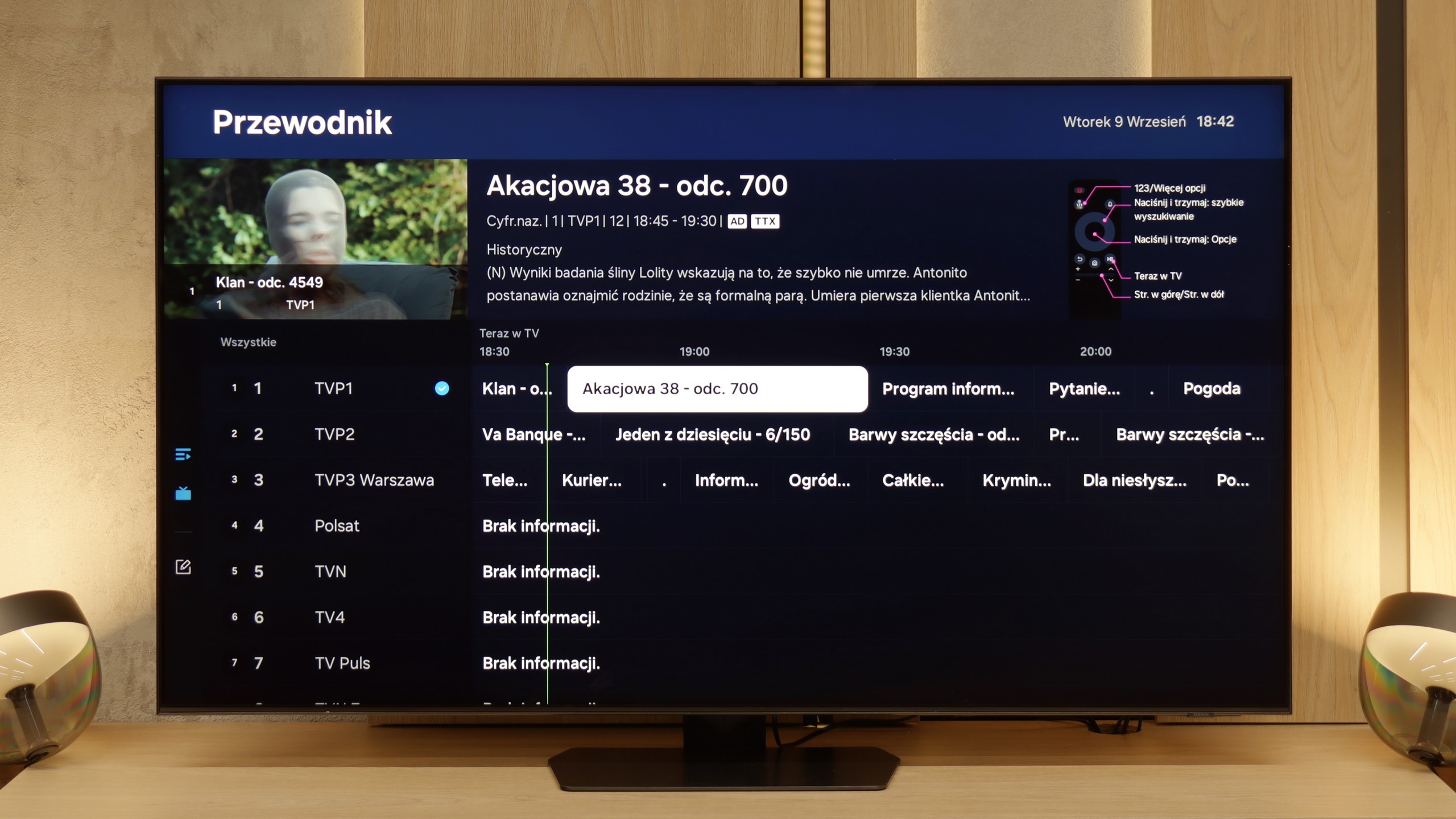
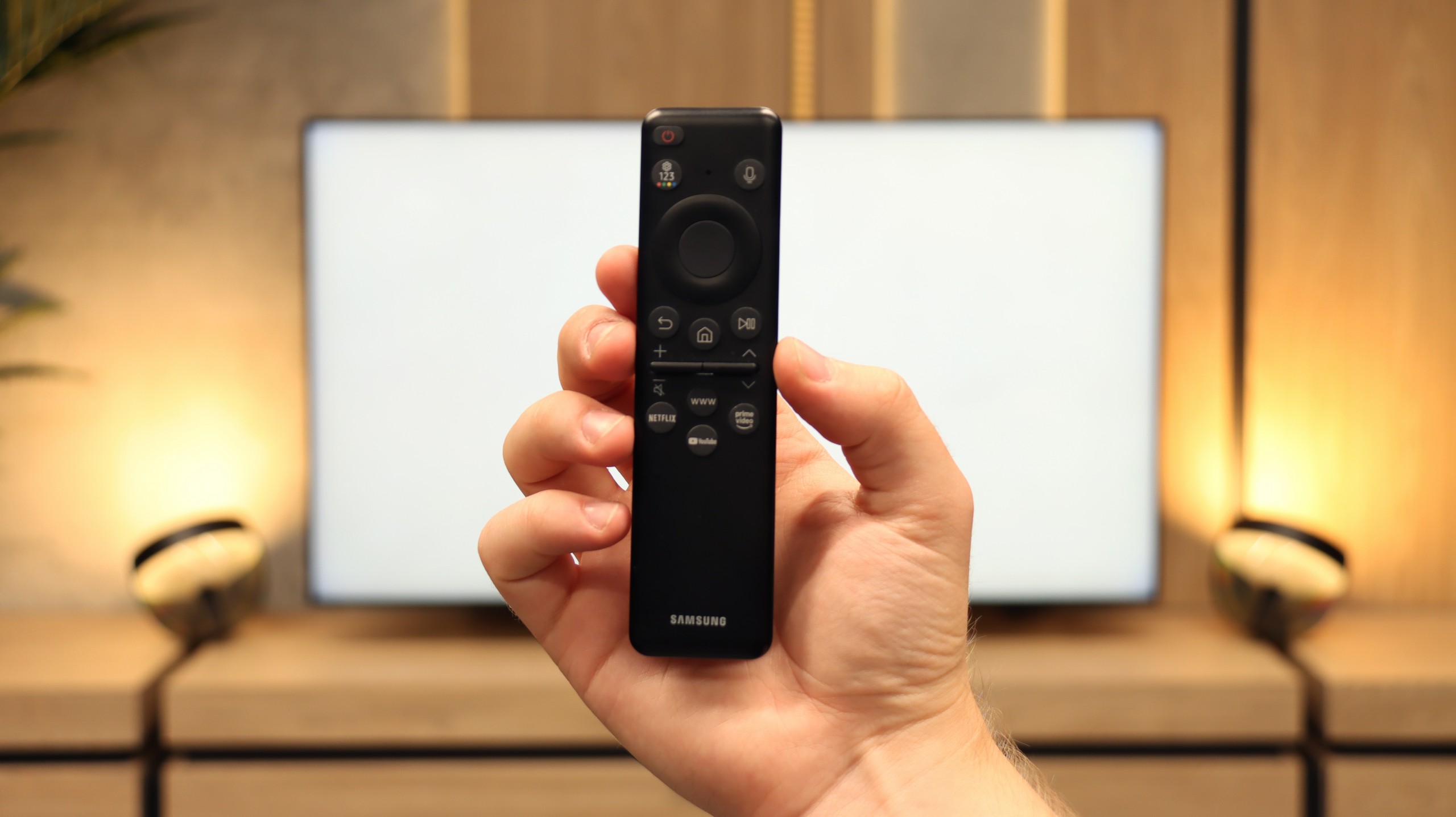
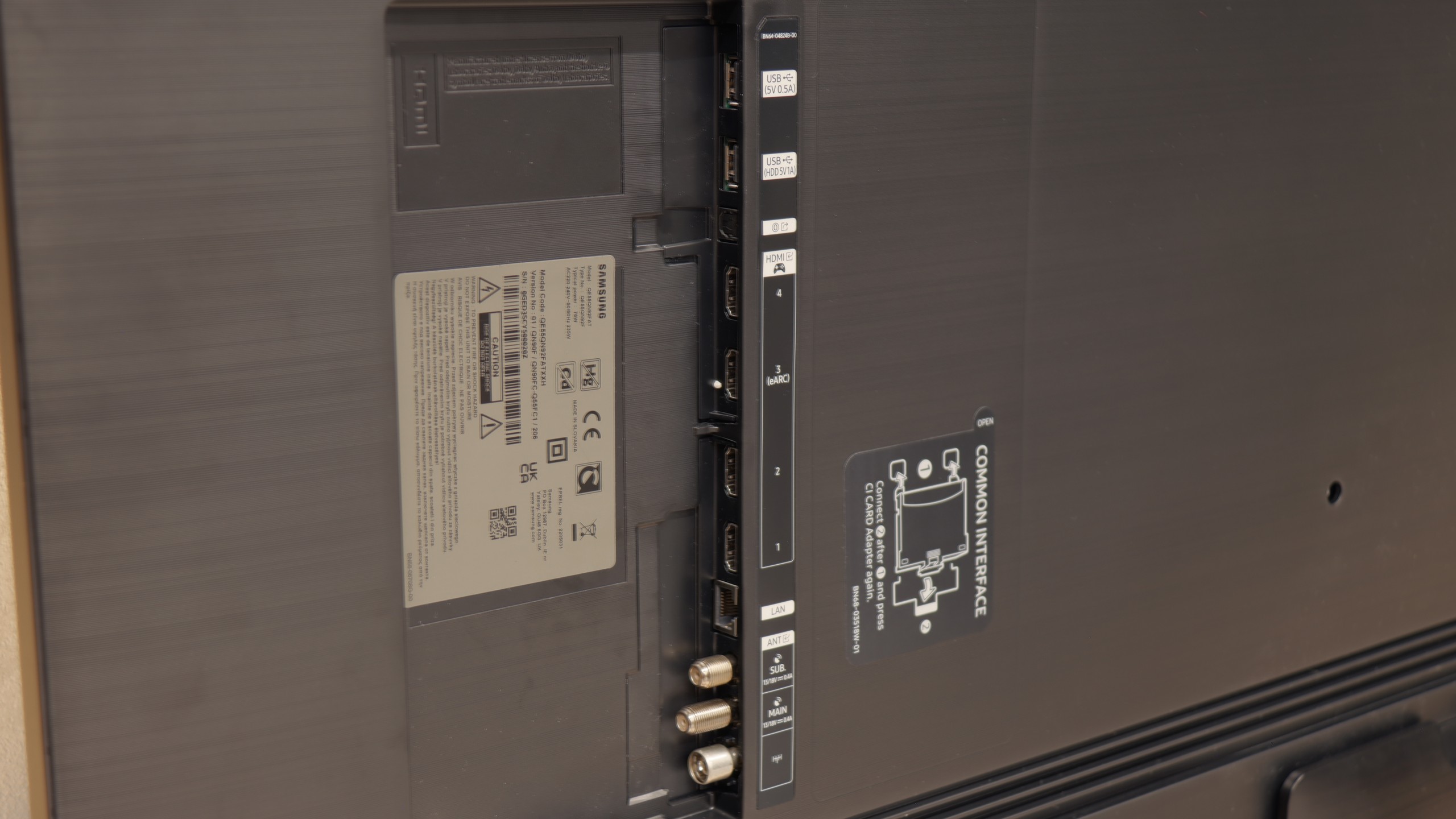
The Tizen system in Samsung televisions is characterised by simplicity and speed of operation. The central point of the interface is the "Smart Hub," which allows for quick access to the most important applications and recommended content, such as Netflix, YouTube, and Prime Video. Tizen also supports the Multi View function, allowing for simultaneous viewing of several image sources. Integration with AirPlay enables easy content sharing from Apple devices, and there is voice control in Polish. Users can control the television, search for content, and perform other operations using voice commands, which significantly facilitates the daily use of the device. One of the most distinctive elements of Samsung QN95D is the included Slim Fit camera, which offers functionality that goes beyond the standards of other models currently on the market. Thanks to the applied "POGO" connector, the camera can be easily connected directly to the television. It allows for video calls and personal training functions using the camera. This innovative approach opens up new possibilities for users in terms of interaction with the television.
It is also worth mentioning the solar remote control, which is an eco-friendly solution—it does not require battery replacement as it charges using solar energy. This remote is also universal, allowing control of other devices, such as the Canal+ decoder, without the need for additional remotes. This is a significant convenience that enhances user comfort. Features dedicated to users of traditional television include picture-in-picture (PIP), allowing for the simultaneous viewing of two programmes. However, the lack of recording functionality may be a disappointment, as this could be a drawback for some users.
Smart TV Features: Tizen
Samsung has been developing its Tizen system for years, and in the QN90F, it is clear that they have reached a point where it is truly difficult to find fault. The system operates smoothly, responds quickly to commands, and does not lag when using more demanding applications. If someone uses an iPhone – there is AirPlay and screen mirroring. If someone has an Android phone – there will be no problem either. Additionally, there is a voice assistant that understands commands in several languages, including Polish, so you can play a movie or change the channel without reaching for the remote. An interesting feature is also the integration with Microsoft’s Coopilot and AI functions, but SmartThings proves to be much more practical – thanks to it, the television can become the centre of the home ecosystem, connecting not only Samsung devices but also Philips Hue bulbs, for example.
Classic Features
The QN90F can also function as an ordinary television. We can forget about recording on USB, but instead, we get PIP mode, which is picture-in-picture – a feature that is rarely found today. Thanks to it, you can simultaneously follow a match and a series, which can save the evening in many households. Additionally, there is a clear EPG guide and a small remote that charges with light (so no batteries are needed) and can take control of the decoder, soundbar, or even a console. It may not be the most advanced on the market, but in everyday use, it turns out to be simply convenient.
Playing files from USB
9.1/10
9.1/10
Supported photo formats:
Maximum photo resolution:

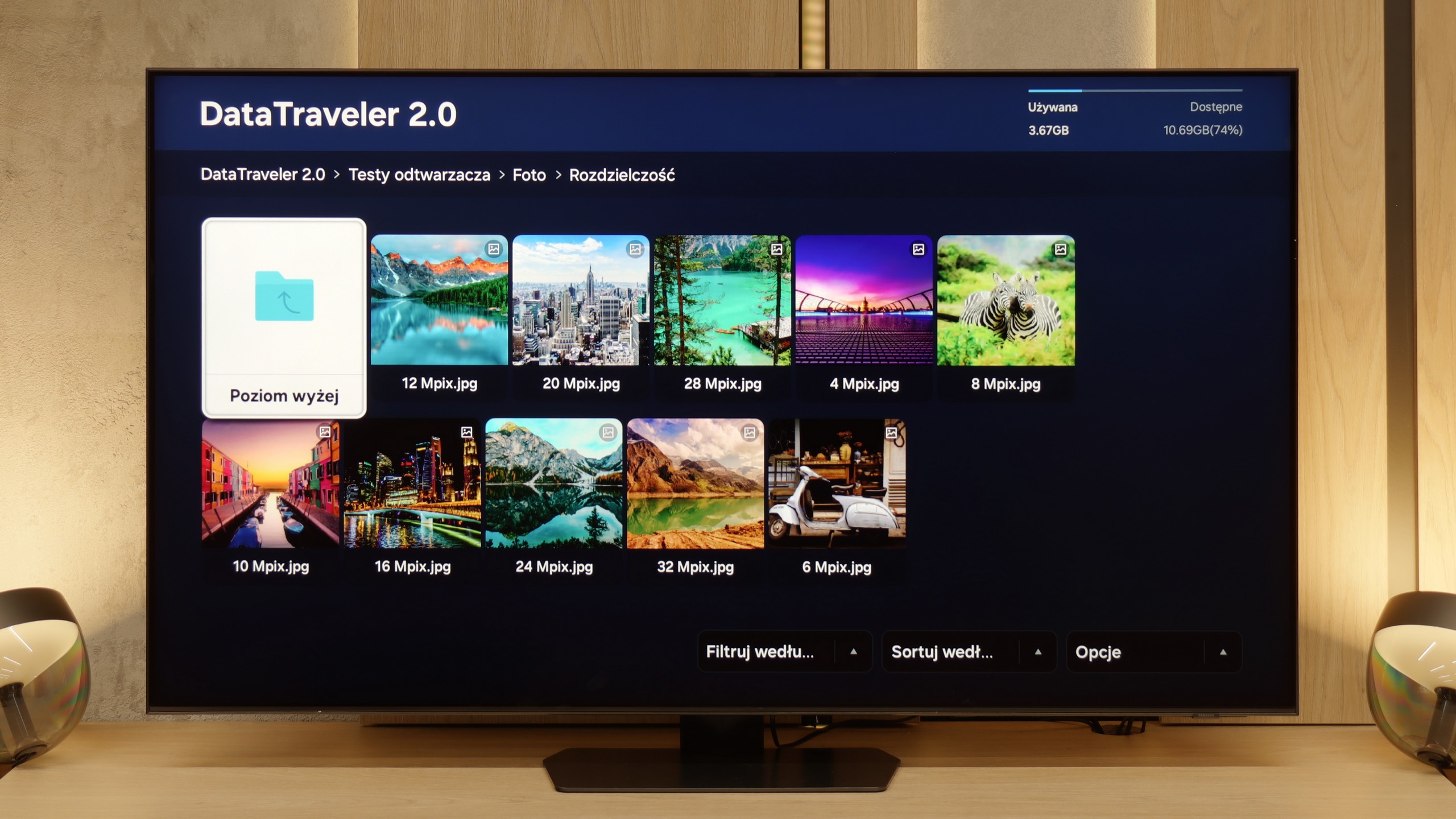
The built-in player in the Samsung QN95D television is undoubtedly one of its stronger points. It handles almost all video and audio file formats that we tested exceptionally well. The exception is the lack of support for Dolby Vision, which aligns with Samsung's policy, and less popular codecs. A significant advantage is the support for Polish characters in subtitles and the ability to customise font colours, which greatly improves the comfort of watching content with subtitles. A downside may be the limited support for photo formats – the television mainly supports JPEG, and there is a lack of support for more advanced formats such as PNG or Apple HEIC.
The built-in media player in the QN90F performs quite well. It supports most popular audio and video formats and can easily play graphic files such as JPEG or PNG. The problem only arises with files in the HEIC format – a type of high-quality photo standard used in iPhones. In theory, the television should support them, as they appear on the list of compatible formats, but in practice, attempting to open a HEIC file can freeze the entire system and force a power reset. It's a somewhat strange situation and another minor glitch that shouldn't occur in equipment of this class. On the other hand, one can be very satisfied as it supports most popular audio and video formats.
Apps
9.1/10
8.7/10














































Sound
7/10
7.8/10
- Maximum volume-86dB
- Dolby Digital Plus 7.1
- Dolby True HD 7.1
- Dolby Atmos in Dolby Digital Plus (JOC)
- Dolby Atmos in Dolby True HD
- DTS:X in DTS-HD MA
- DTS-HD Master Audio
The sound in Samsung QN95D is at a very good level thanks to the 4.2.2 system with a power of 70W. It provides clear, crisp audio, and the bass is well-balanced, which works well both for watching films and gaming. The support for Dolby Atmos adds a spatial effect, allowing for a fuller audio experience. However, there is a lack of support for DTS, which is a typical feature for Samsung TVs, but it may be a downside for those attached to that format. Overall, the sound performs very well and should meet the needs of most users.
The QN90F performs really very well. Despite the slim design of the television, there’s a noticeable bass that adds depth to the sound. The speaker system here operates in a 4.2.2 configuration and offers a total power of 60 W – for built-in audio, this is quite a solid result. Moreover, with materials supporting Dolby Atmos, one can perceive a subtle spatial effect, which works quite well in everyday viewing. Of course, with equipment of this class, it's difficult not to recommend an additional soundbar. It's best to choose one that supports Q-Symphony technology – thanks to this, the television and soundbar play simultaneously, resulting in a fuller and decidedly more cinematic effect.
Acoustic Measurements
No acoustic data
86dBC (Max)
75dBC


